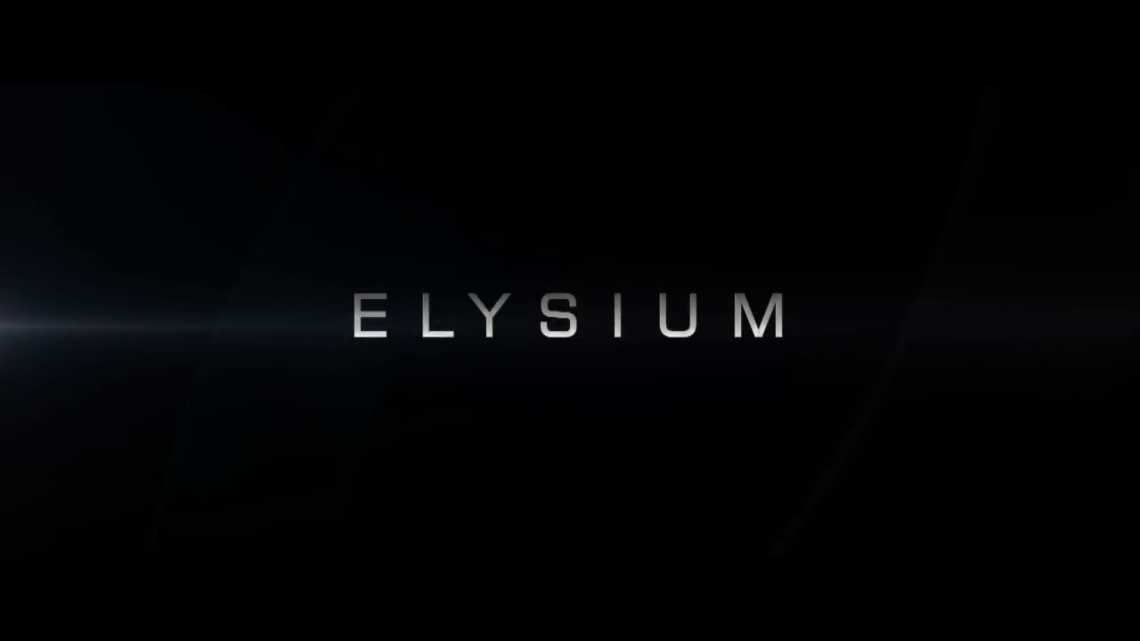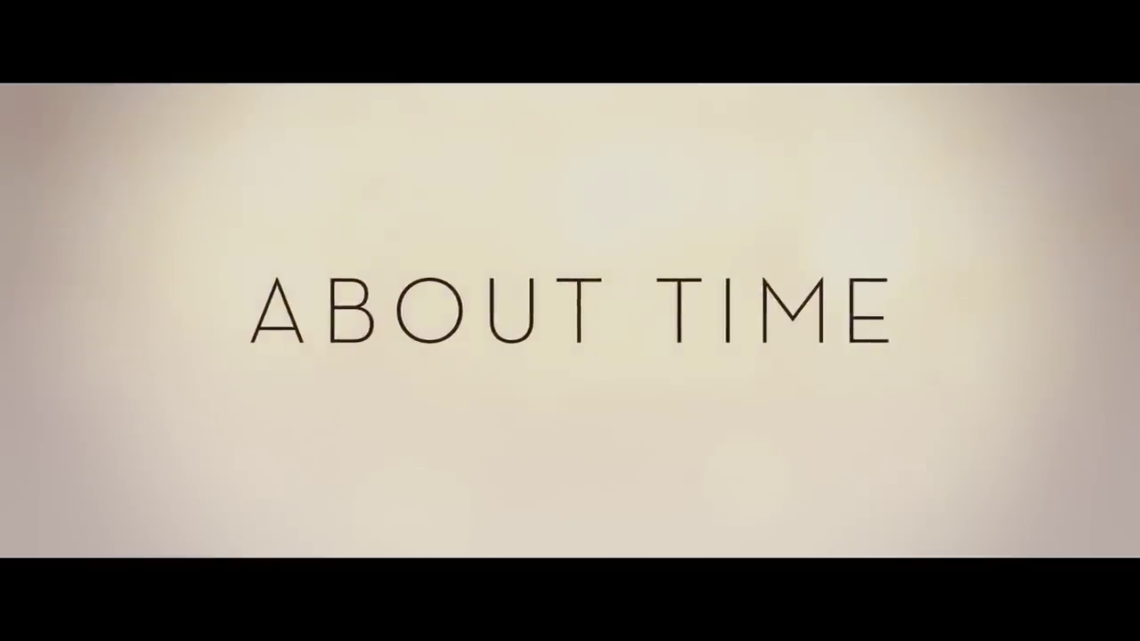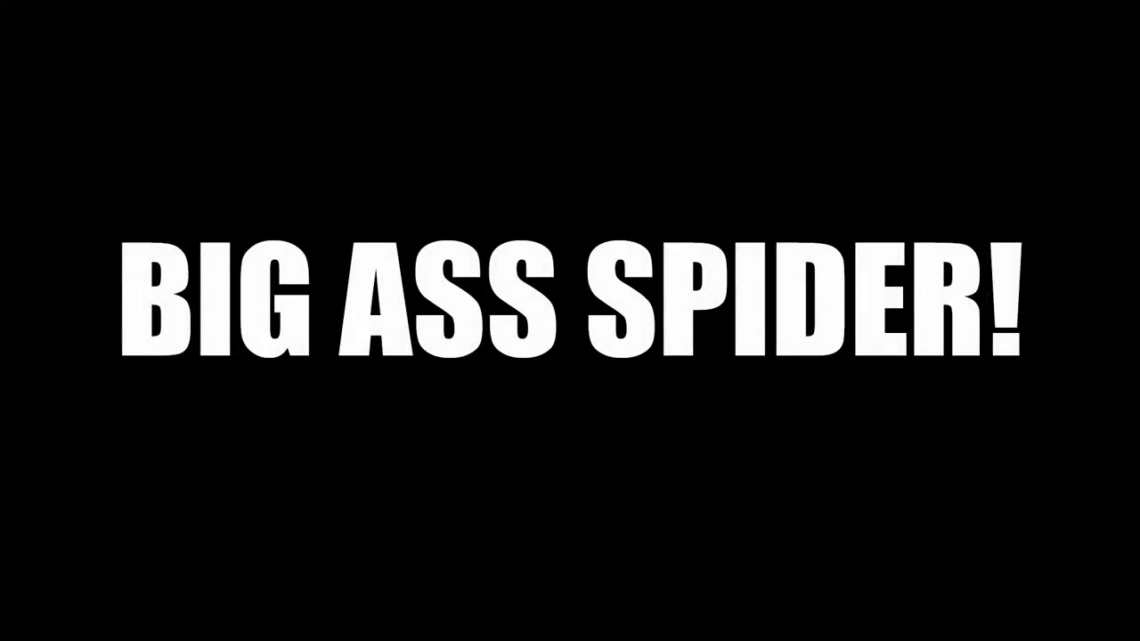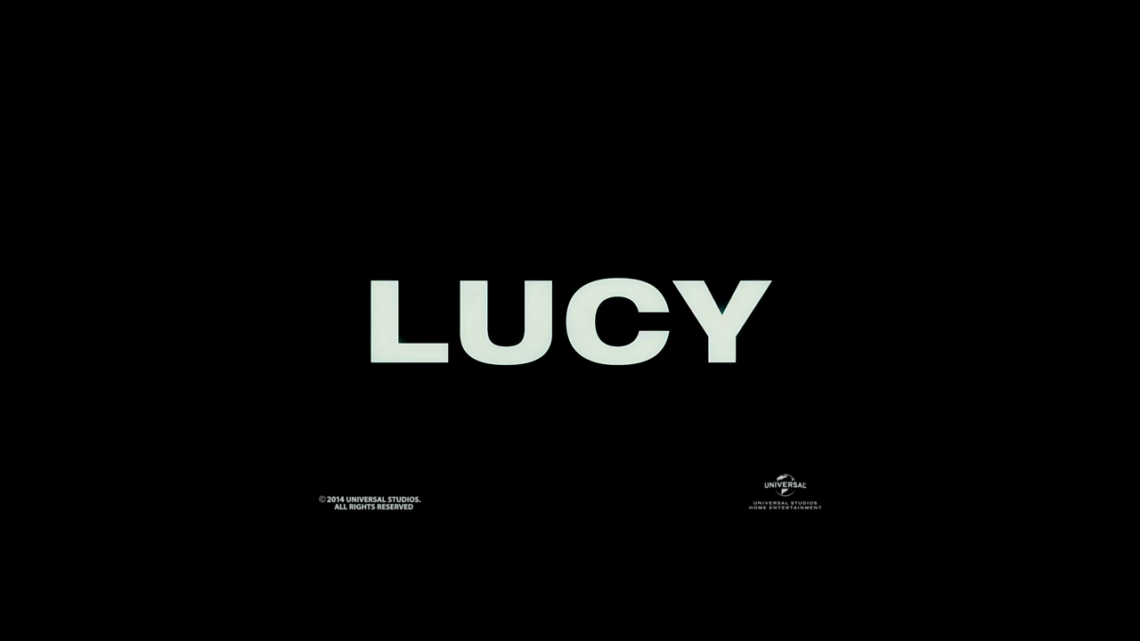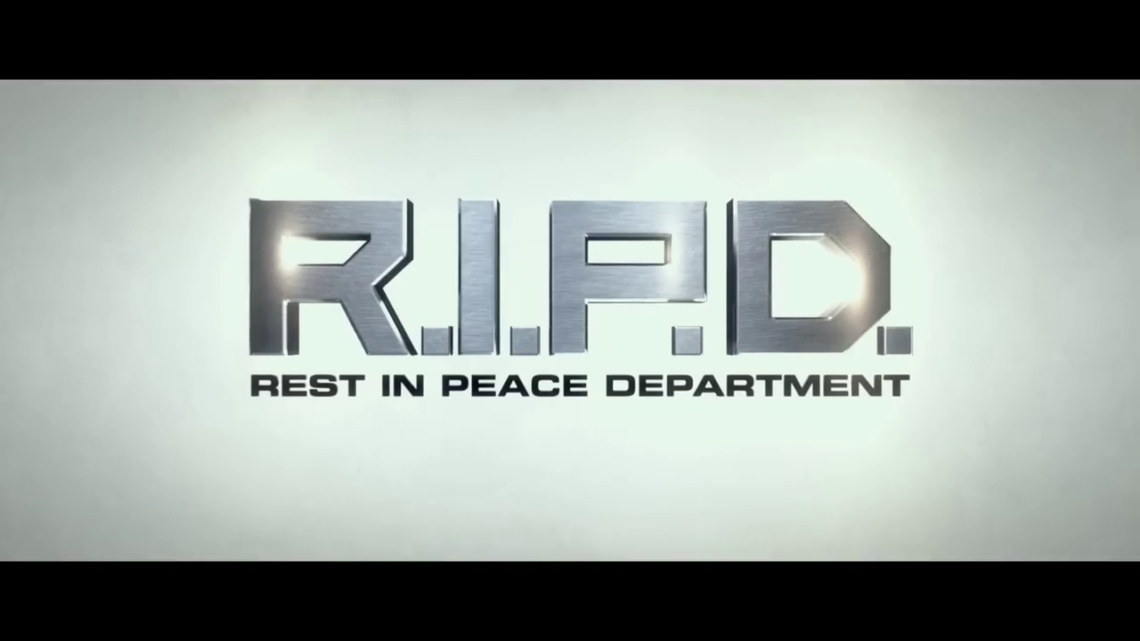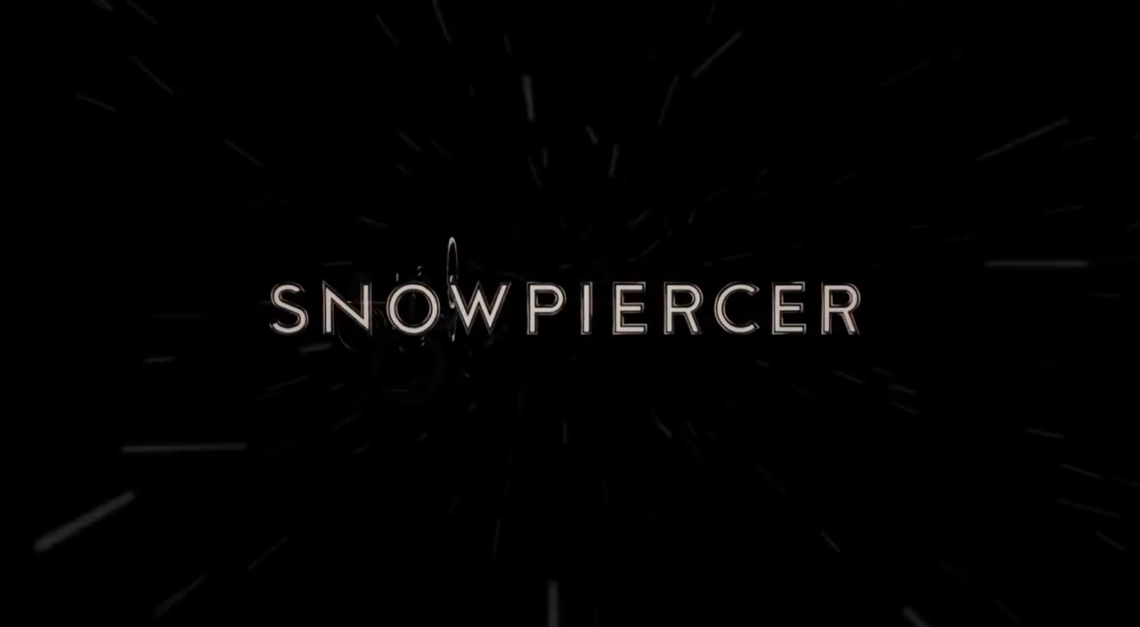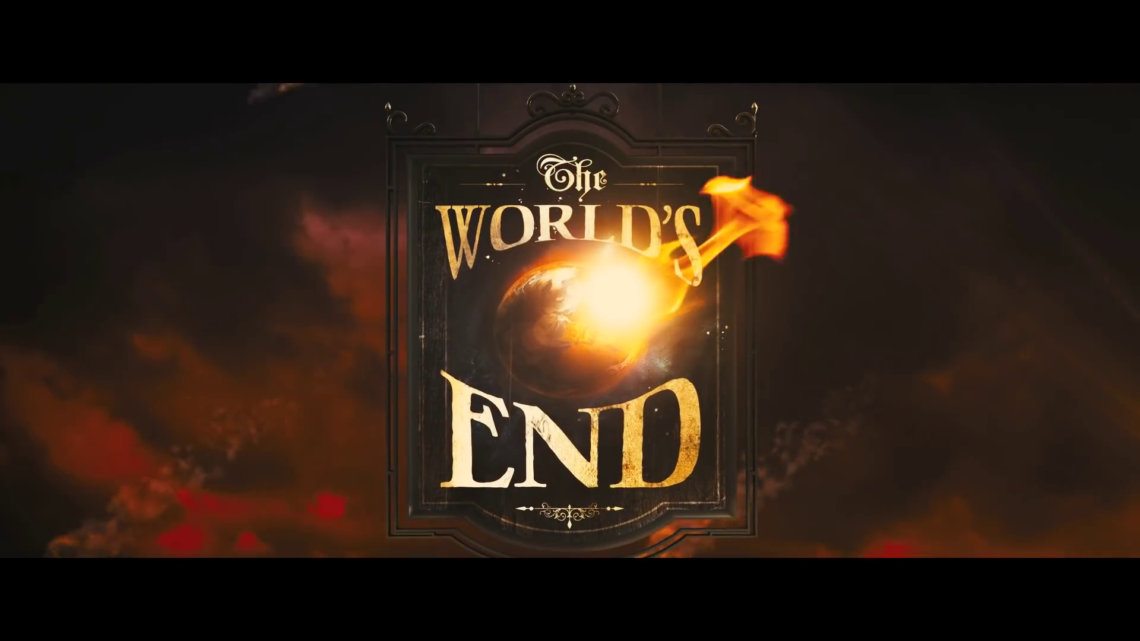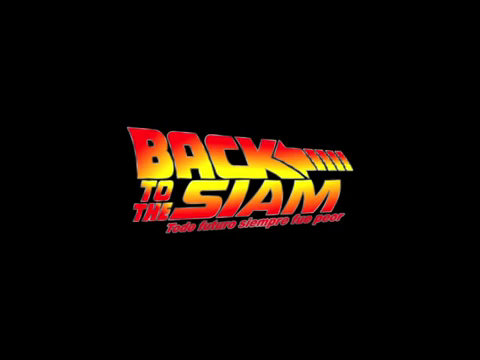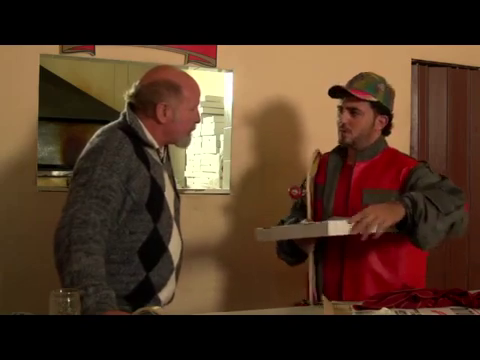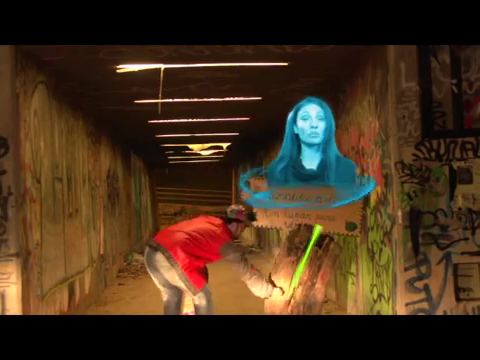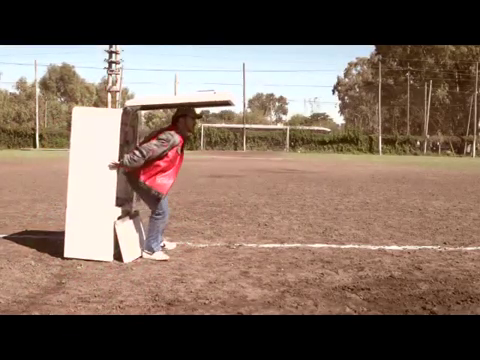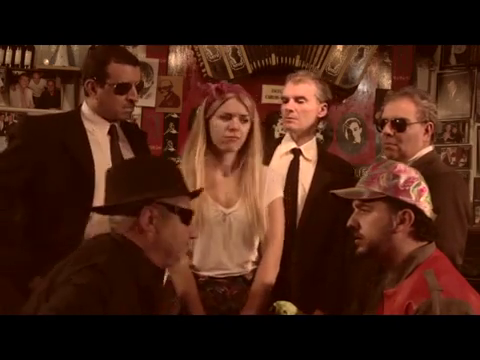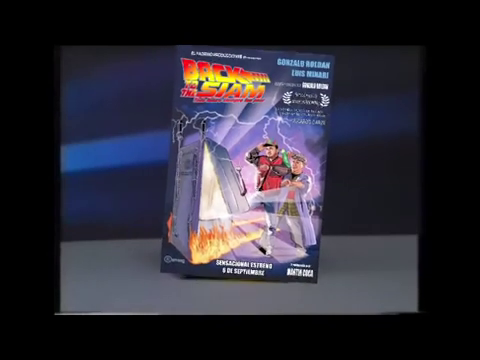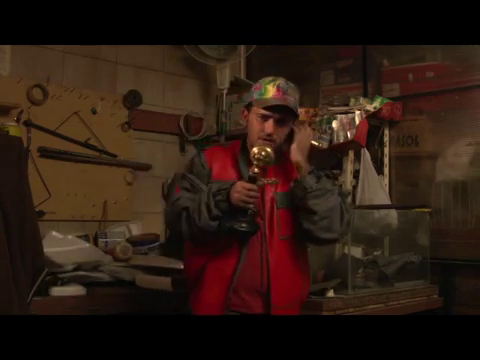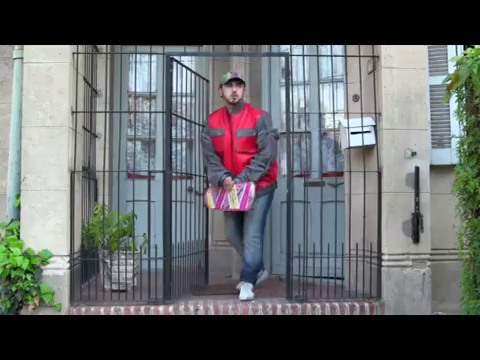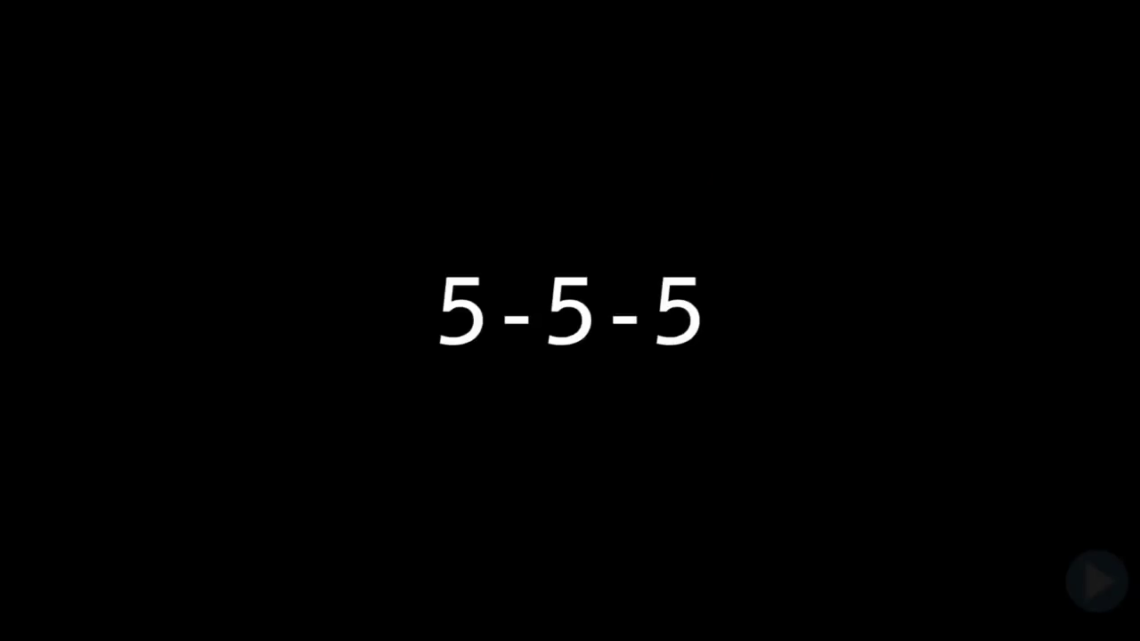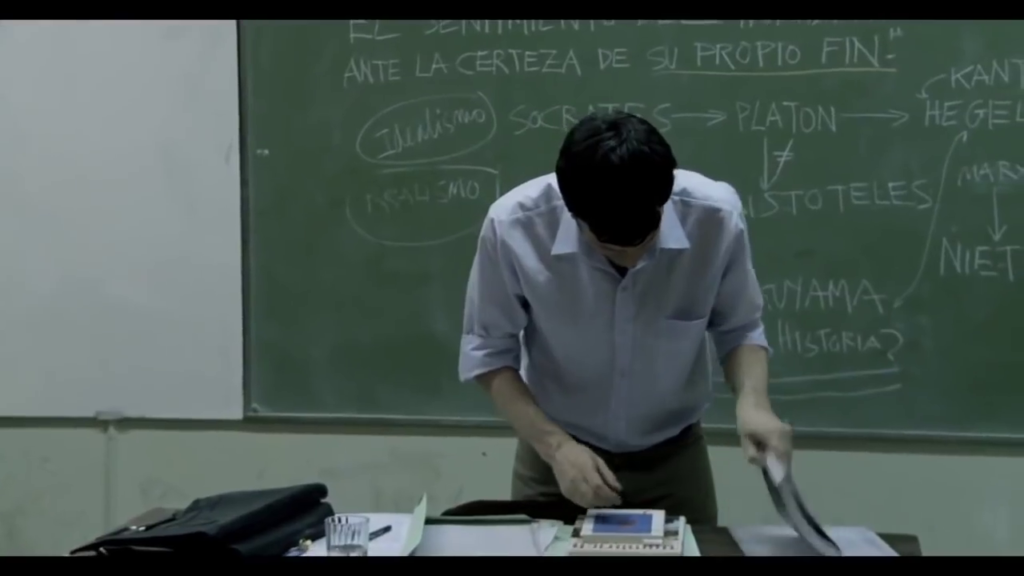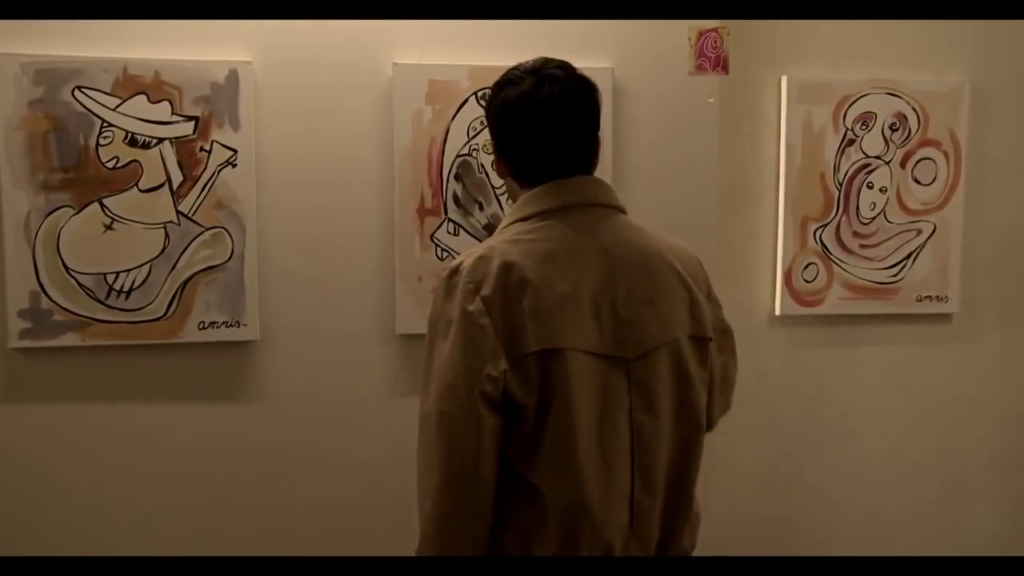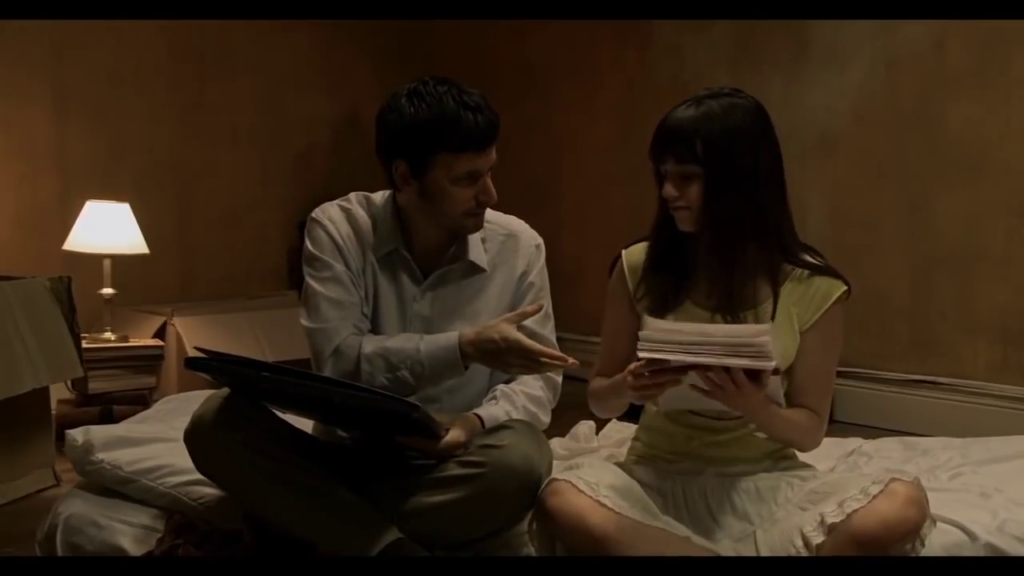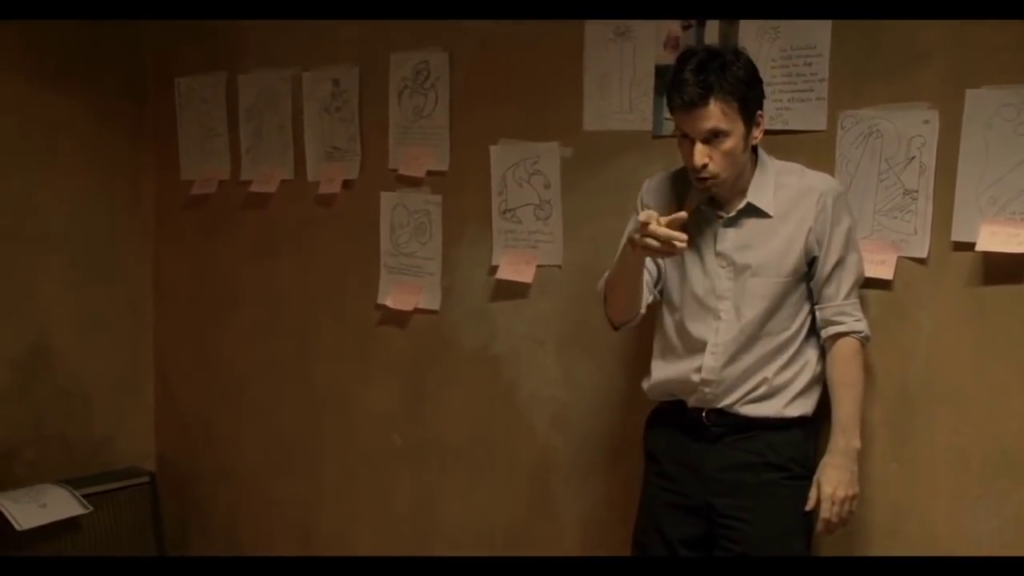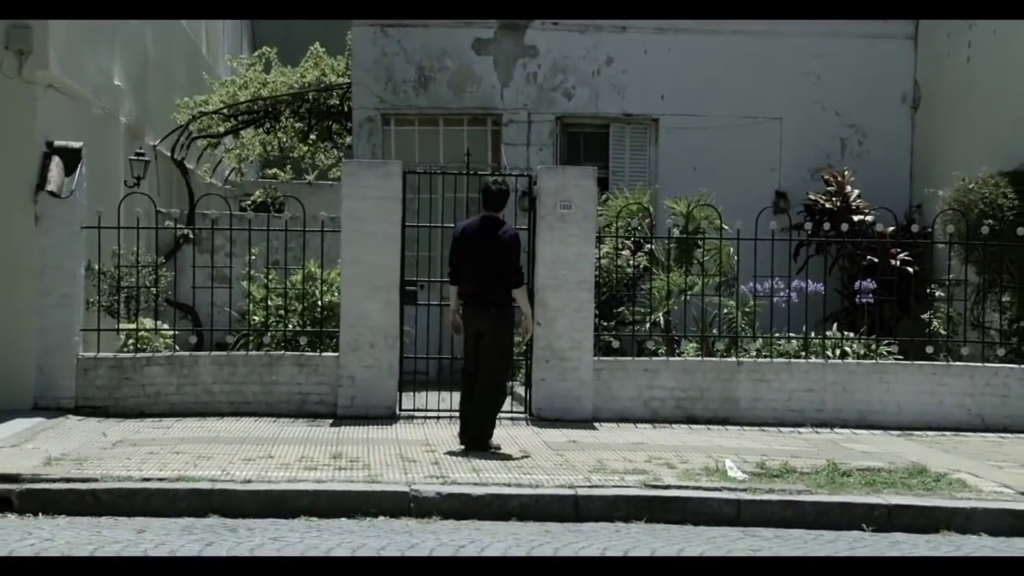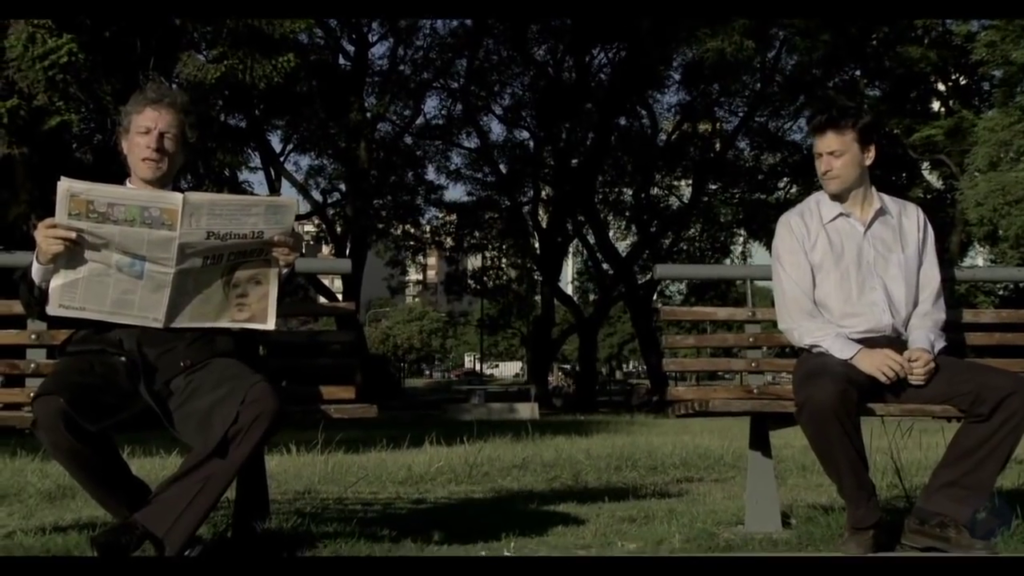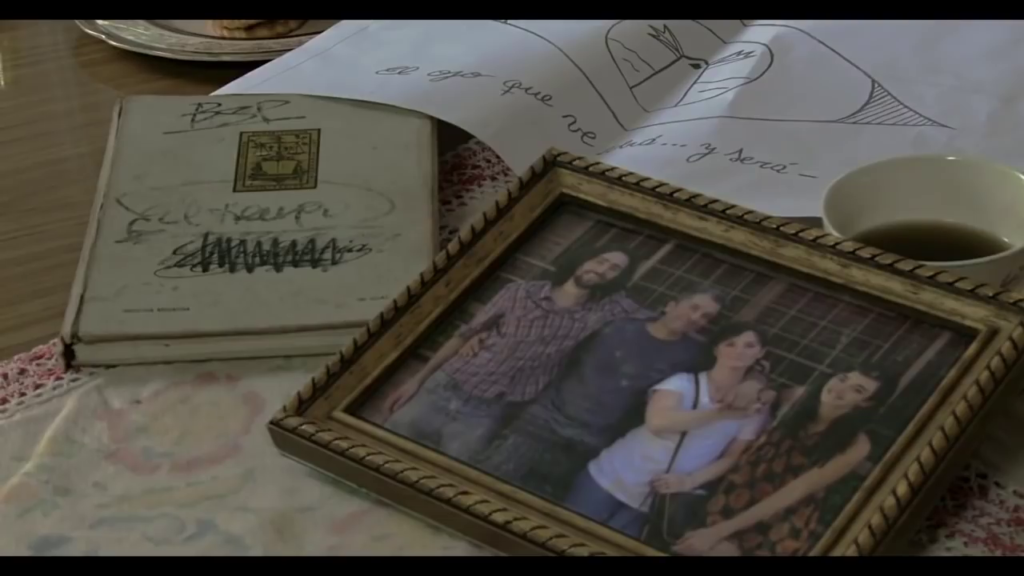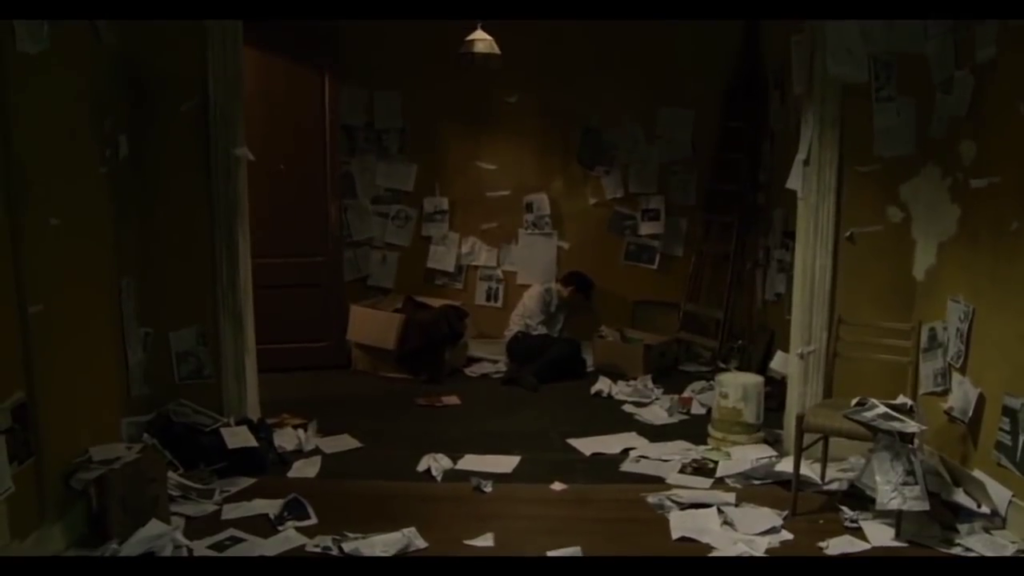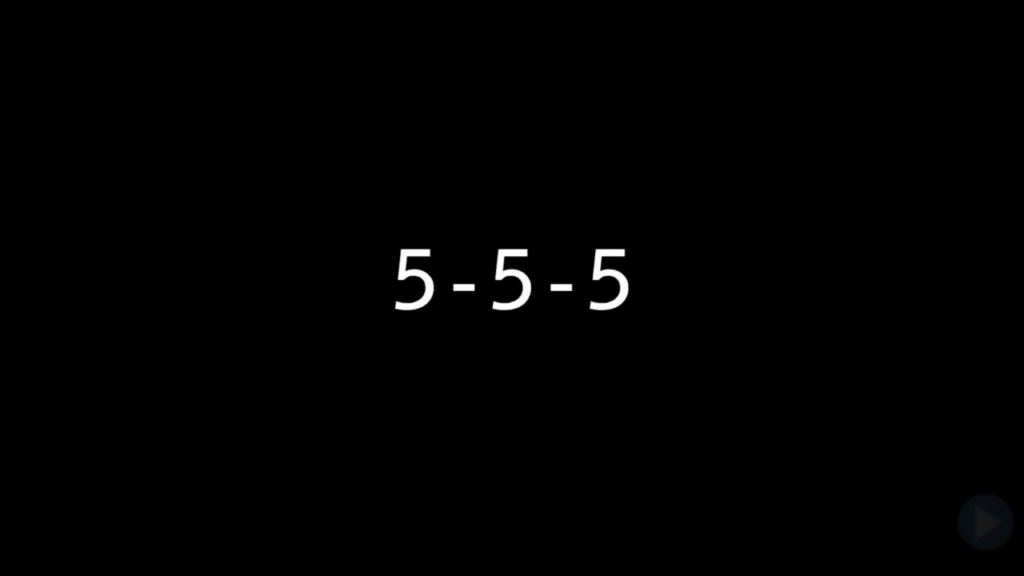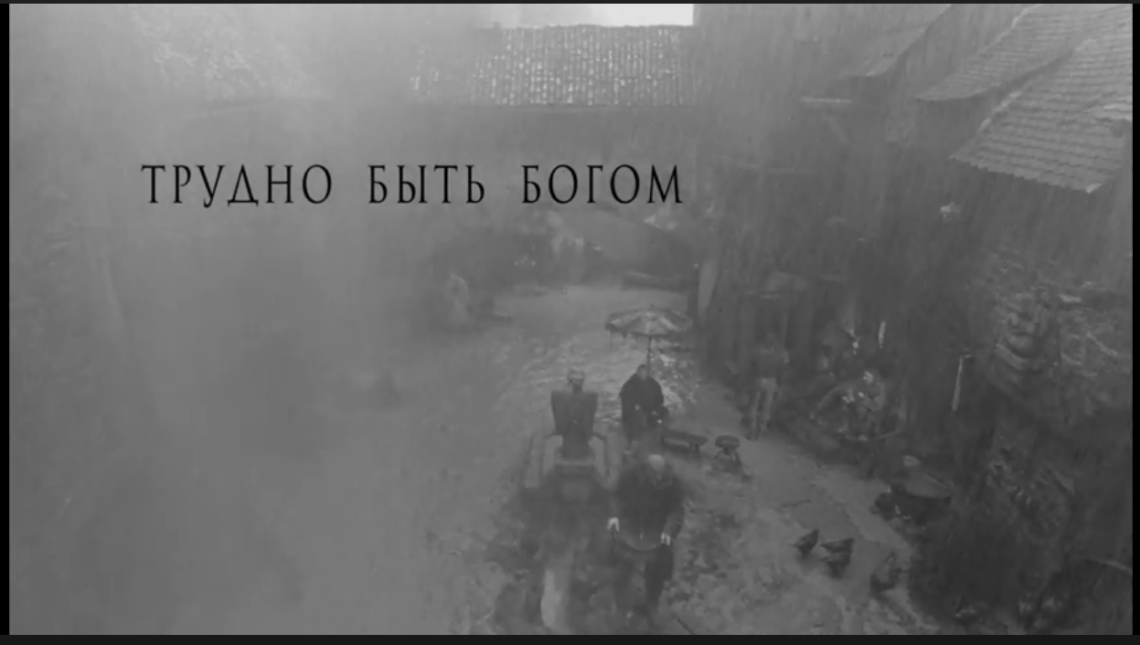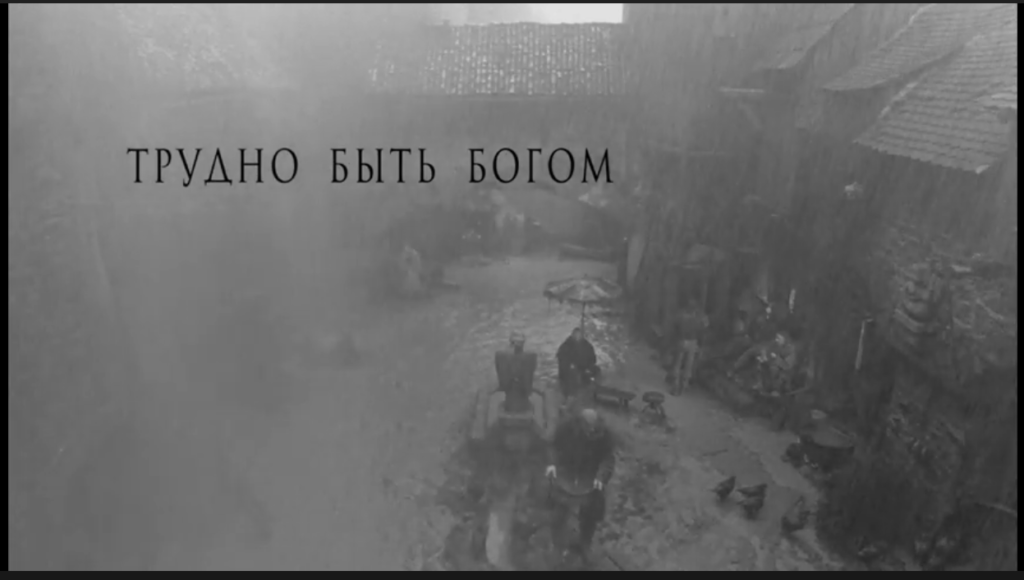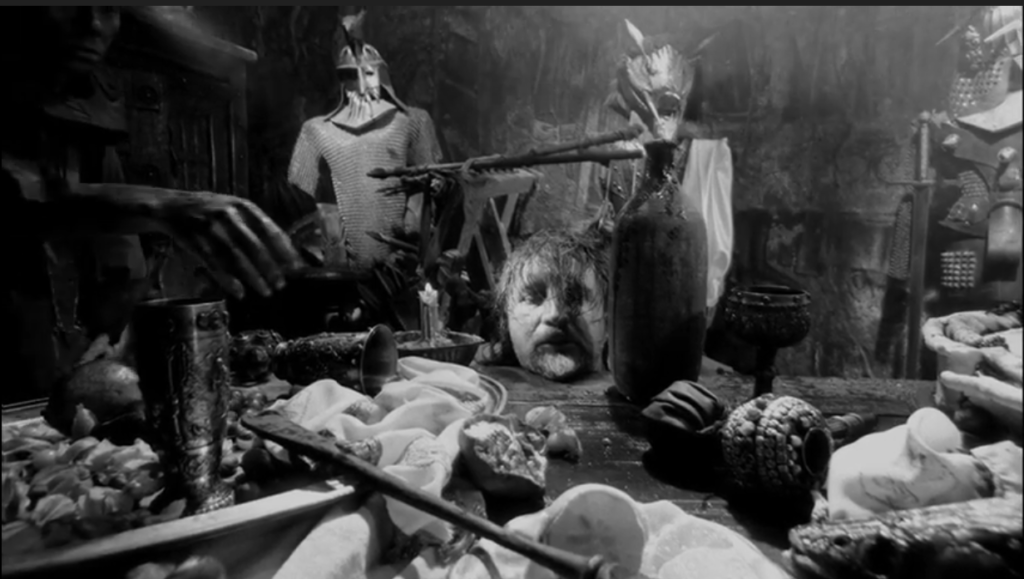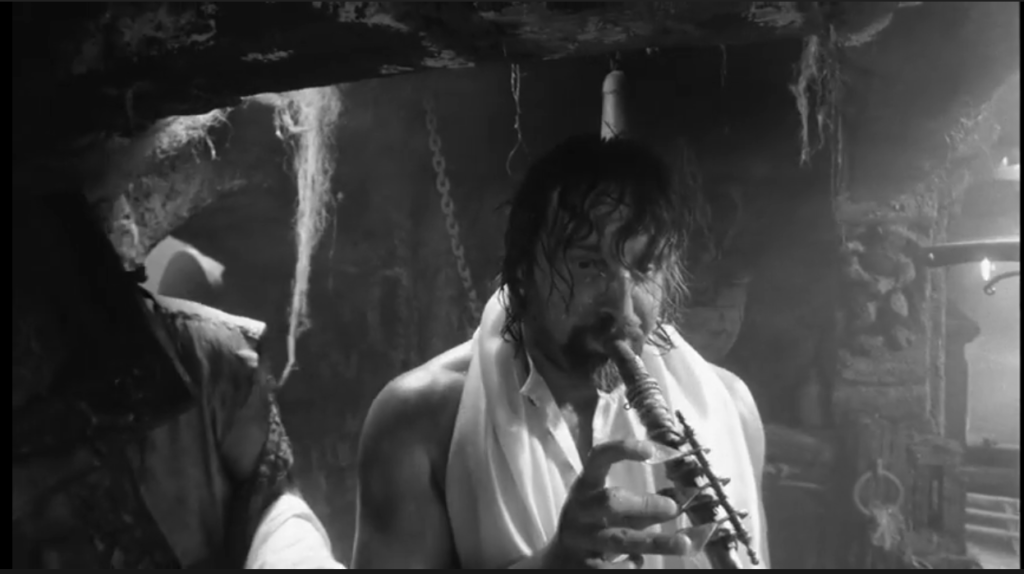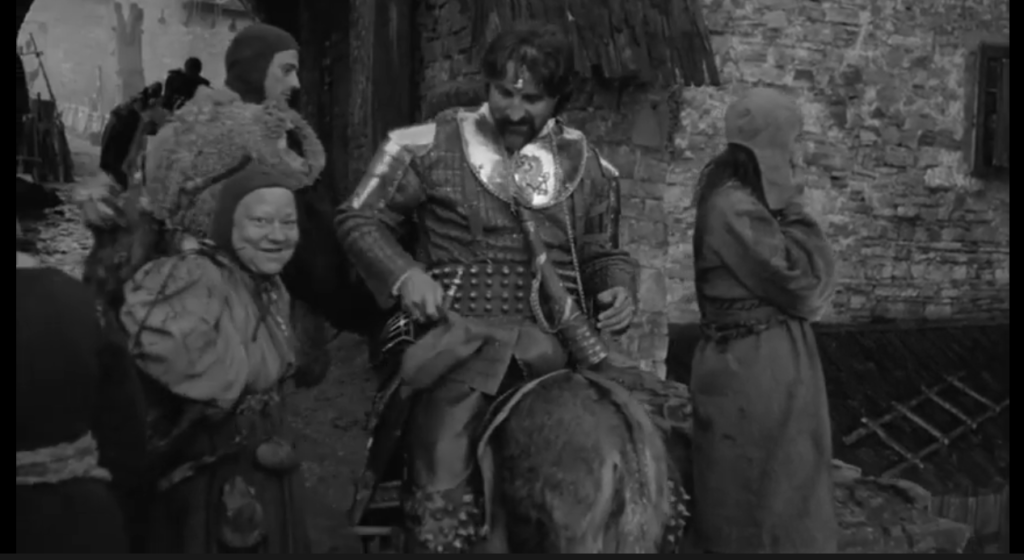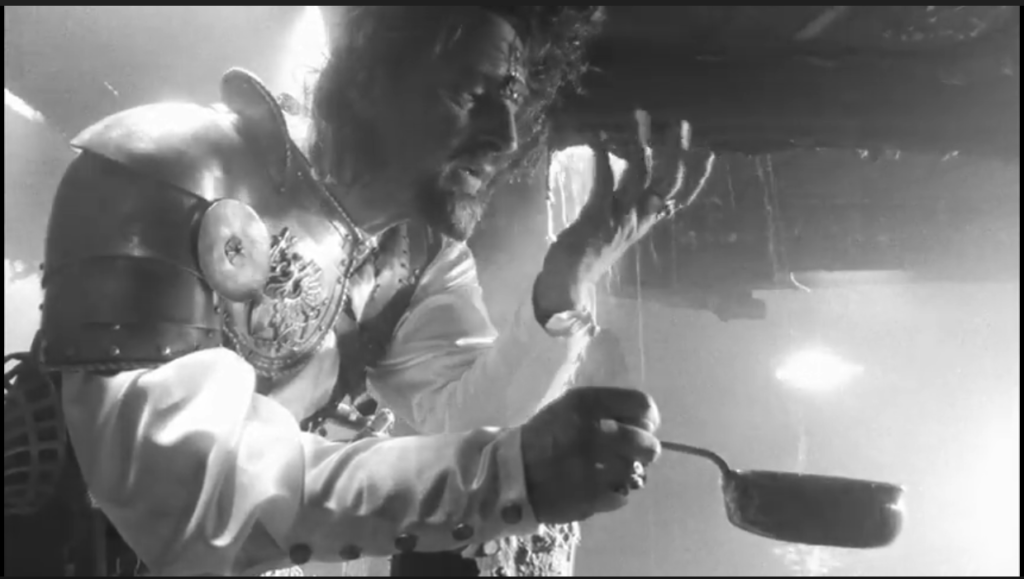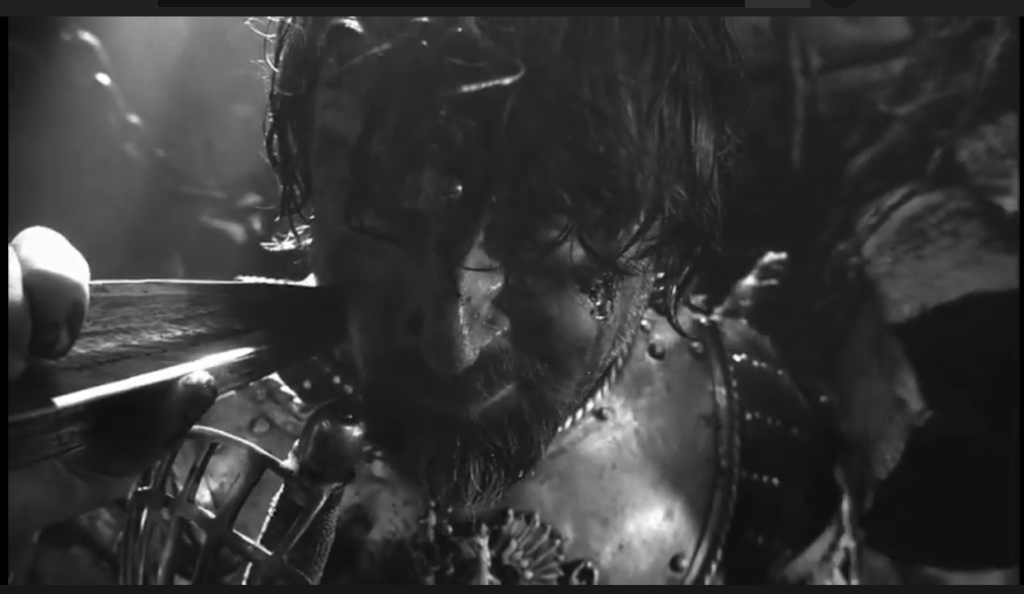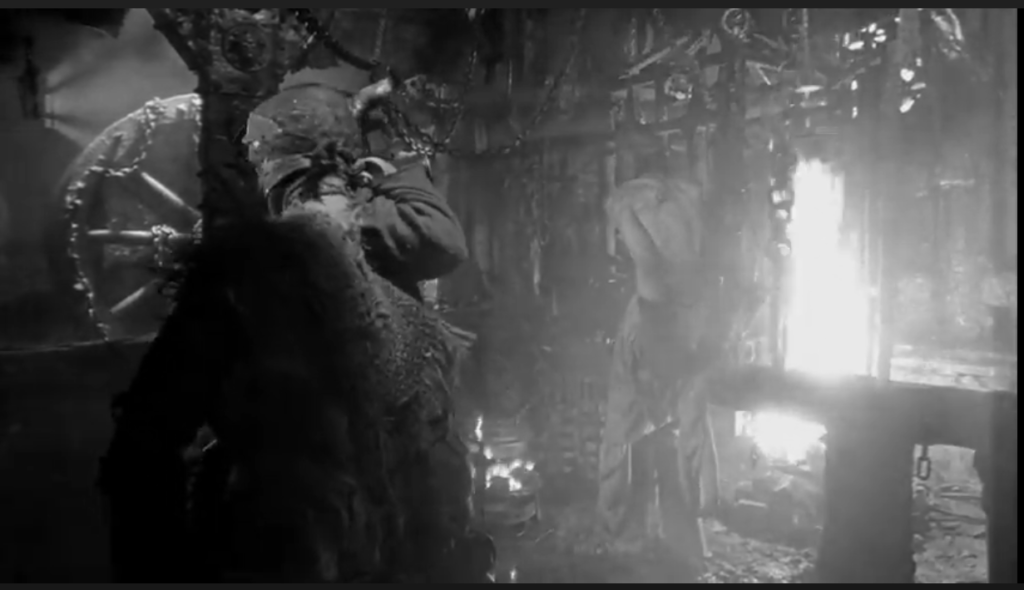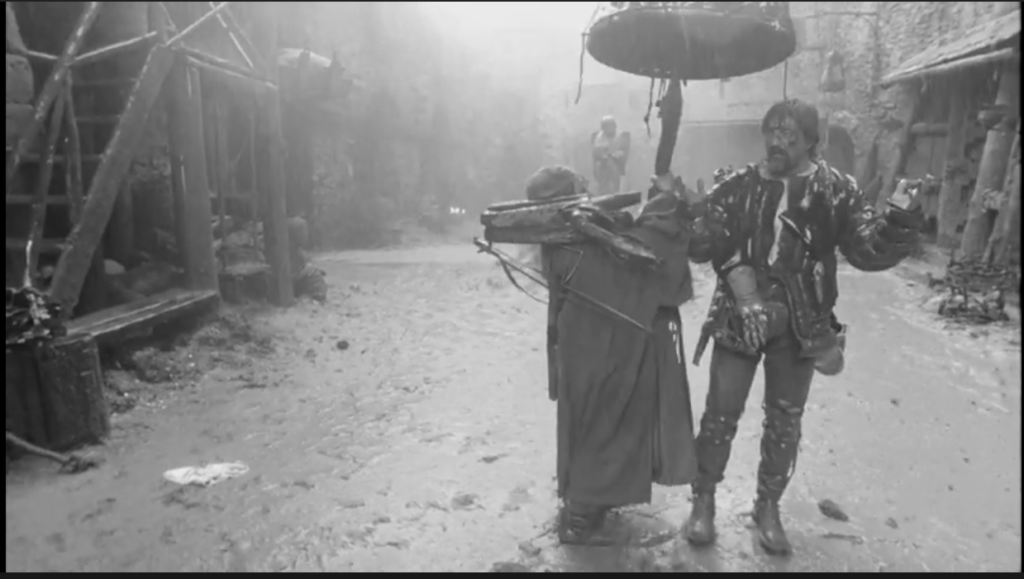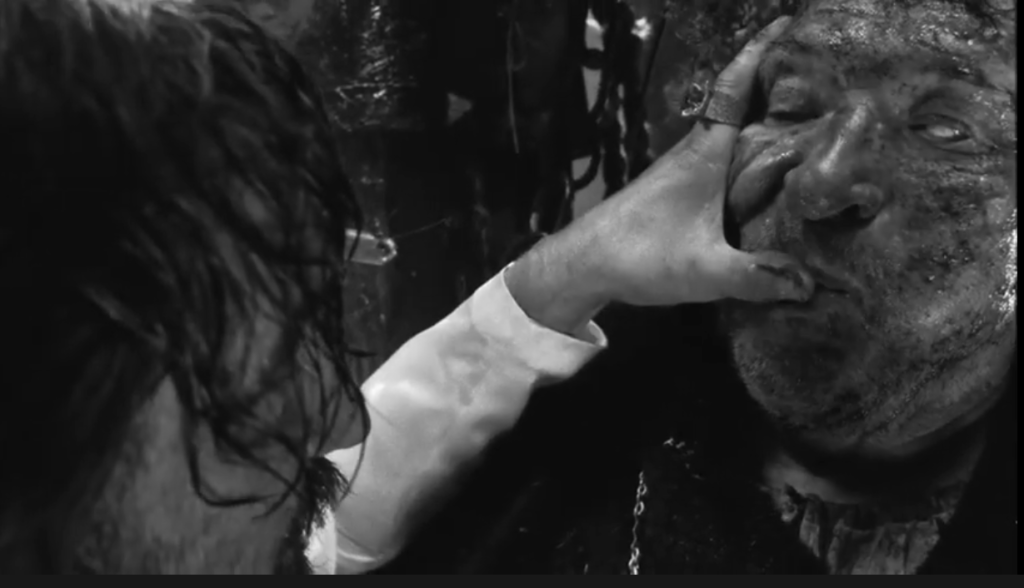-
#653 – Elysium (2013)
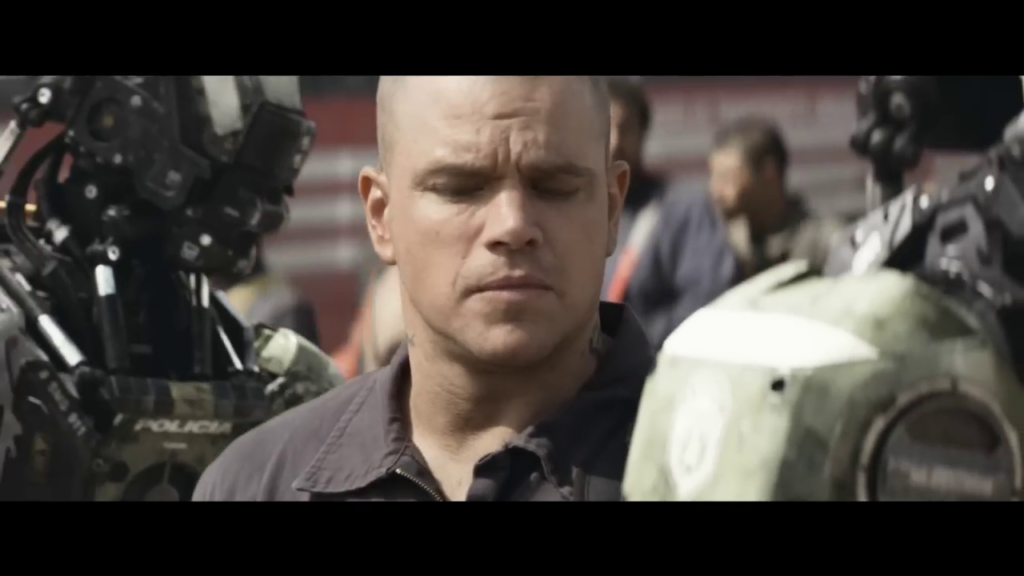
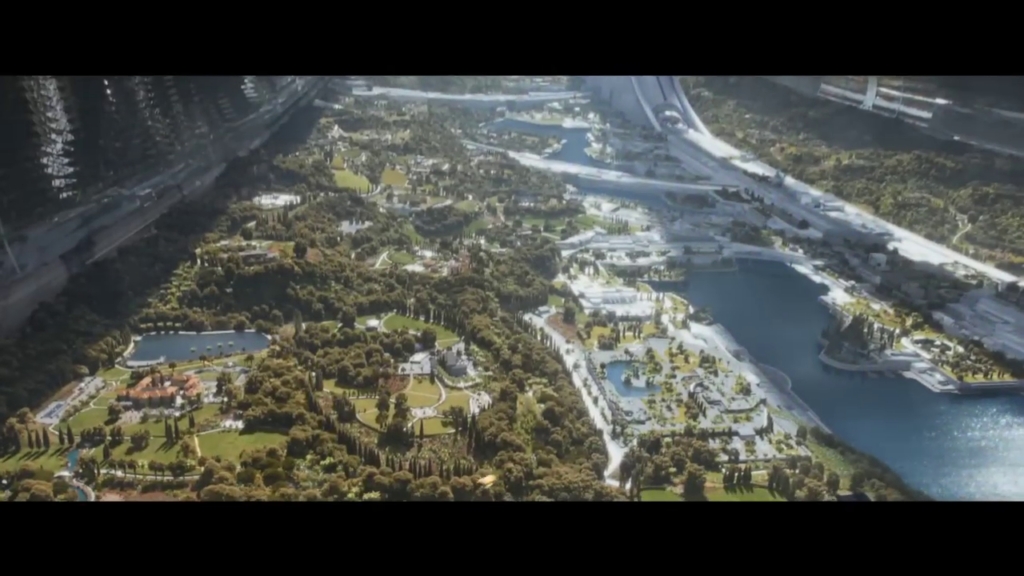
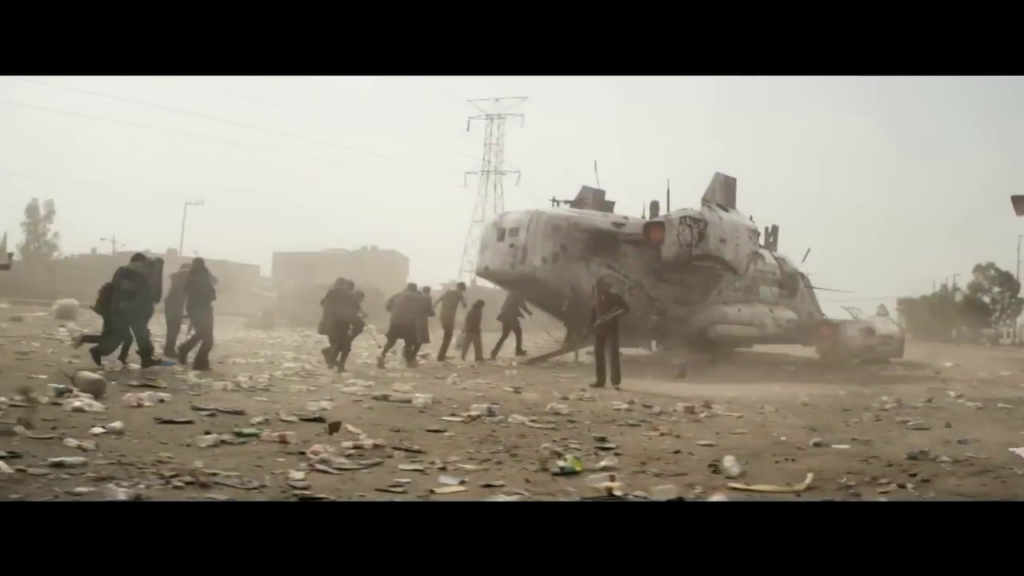
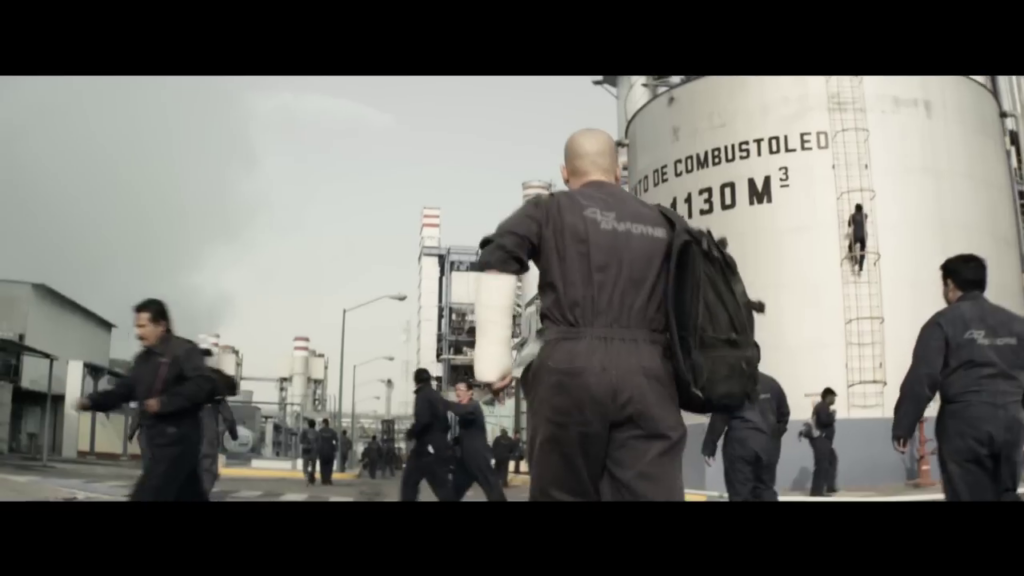
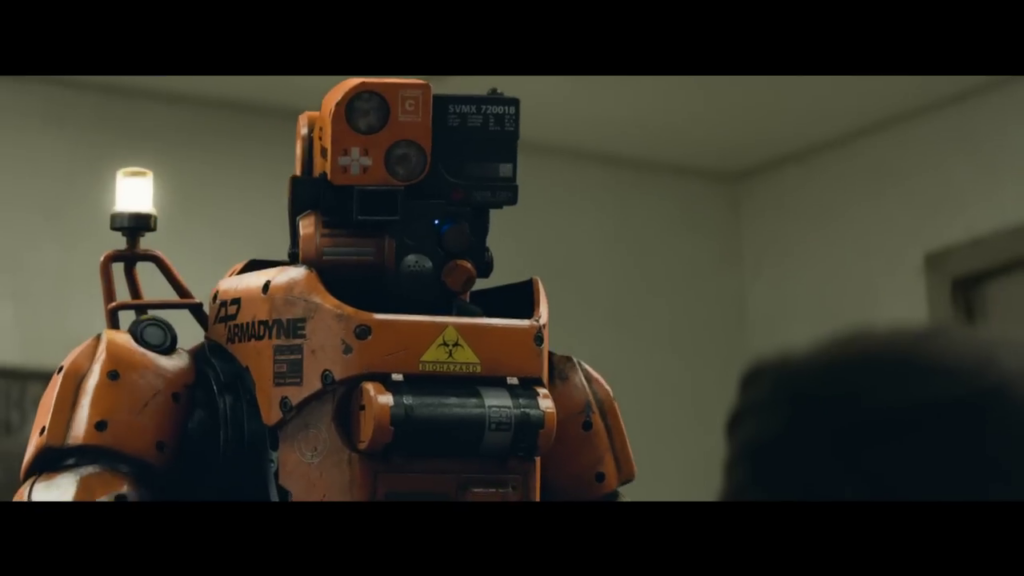
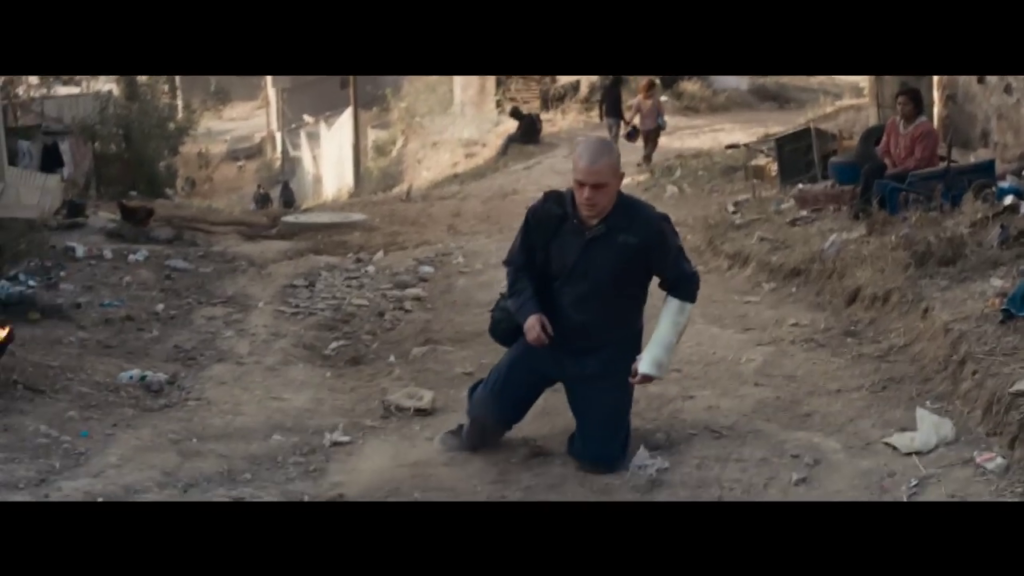
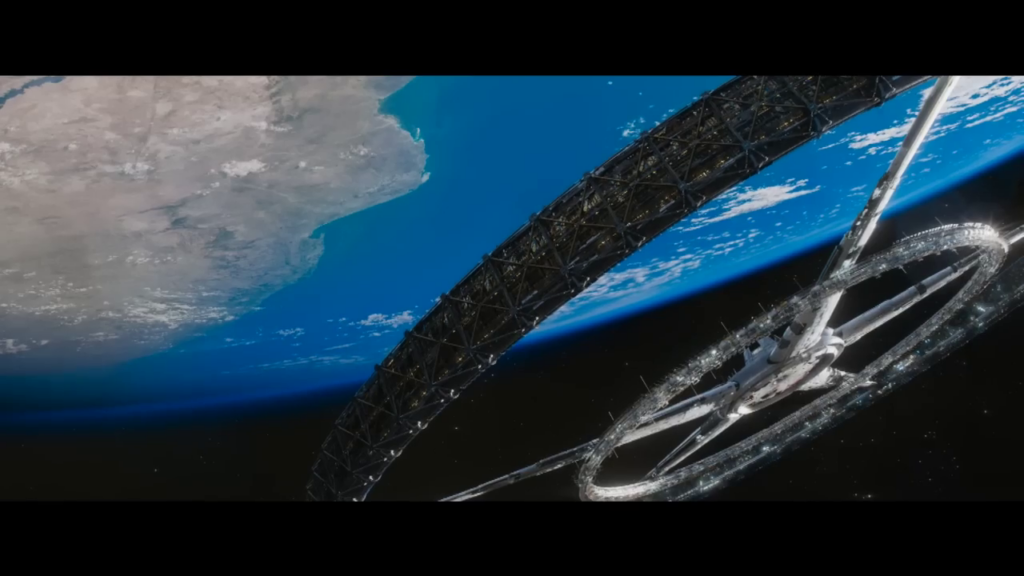
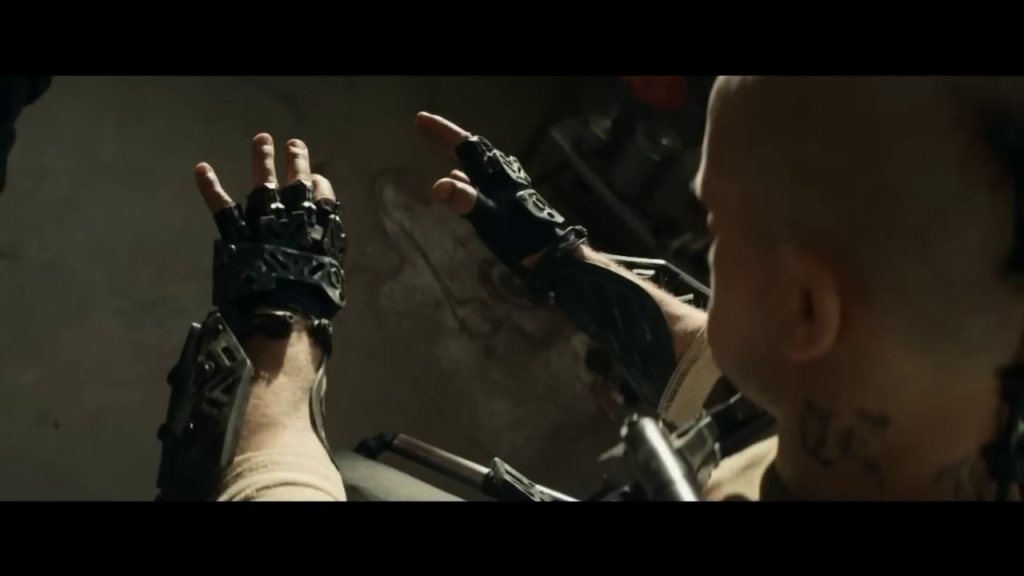
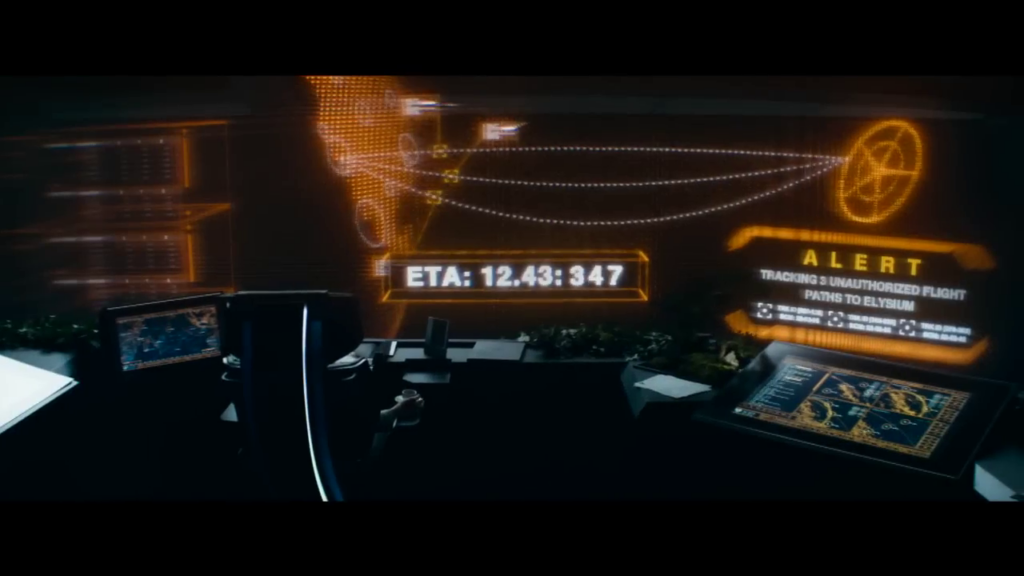
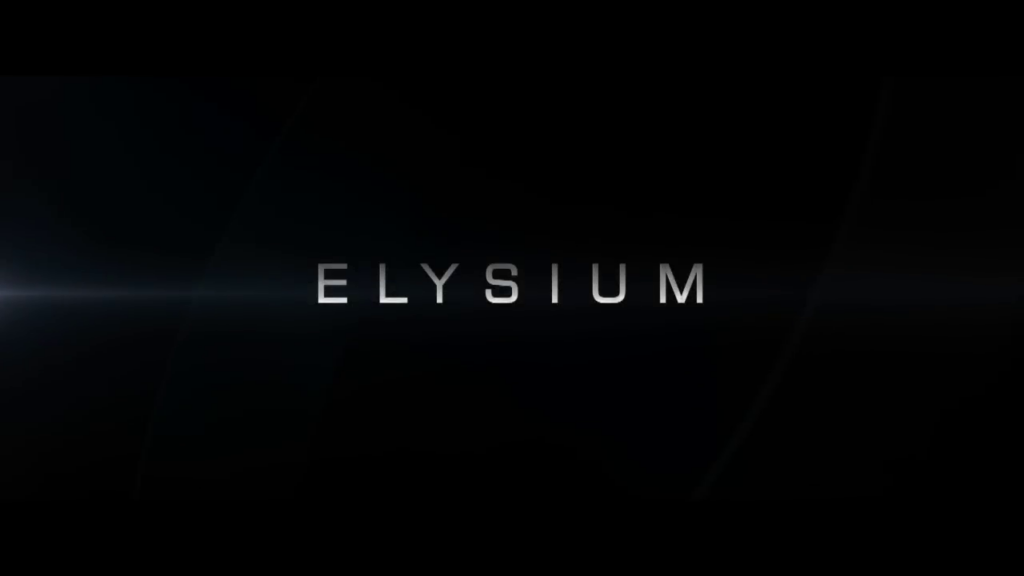
Elysium (2013)
Film review #653
Director: Neil Blomkamp
SYNOPSIS: In a future where the rich and wealthy have escaped an overpopulated and polluted earth to live on a luxurious space station orbiting the planet, Max da Costa is attempting to survive on the surface. When an accident at work leaves him exposed to lethal radiation and only a few days to live, Max decides to team up with an old criminal acquaintance to infiltrate Elysium and access the medical facilities there…
THOUGHTS/ANALYSIS: Elysium is a 2013 sci-fi film. Set in the year 2154, where the earth is overpopulated and polluted, Max Da Costa (Matt Damon) is exposed to lethal radiation at a job, and is given only a few days to live. With the only way to cure himself on board the space station Elysium, where the rich and powerful live in luxury, he teams up with a hacker and an old friend in order to find a way up there and cure himself. The plot of the film is, at its core, very predictable: all of the pieces and characters motives fit together and progress in the exact way you expect. Not entirely a bad thing, as it makes the film flow nicely, but you can’t help but feel there’s something more that could have been done with it. As it is though, it’s all fairly self-contained and entertaining enough, with the film being tied together with some strong action scenes and energetic fights. The concept of a divide between the poor on the planet and the rich in the space station above is a fairly simple one to grasp, and doesn’t need any real explanations to grasp it as the underpinning of the story.
If the film looks or seems familiar in any way, then perhaps you’re remembering the 2009 film District 9. This is not coincidental, as Neil Blomkamp directed both films, and clearly brings a shared vision of a ruined earth for both films. Even one of the villains in Elysium, Kruger, is played by the lead actor from District 9 (Sharlto Copley). The two are different films, but there’s a lot of similarities that inevitably draw comparison. Whereas District 9 dived deep into it’s themes and explore issues of discrimination amidst an alien invasion, Elysium really struggles to get it’s theme of extreme class divide in the same way. Even Blomkamp himself admits he didn’t get it across in the way he intended to. As mentioned, the film’s action and energy is decent, and the plot flows nicely; it’s just that any further depth into it’s themes never really grab the viewer’s attention.
The imagery of a dilapidated earth are rendered well, with plenty of dirt and grime that highlights the conditions on the planet. In contrast, Elysium has a more utopian aesthetic, combined with the more futuristic setting of the rotating space station. Max as a character feels deeply underdeveloped, as his only motive is to get to Elysium to cure himself, and lacks any other thoughts on what is going on around him. It makes sense, sure, that he is only focused on staying alive, but it does leave a hole at the centre of the film that ties the main character to the various machinations around him. Overall, Elysium is a perfectly serviceable action film with a clearly defined story and setting. In terms of bringing the themes behind the story. the film fails to do so in any meaningful way, and draws inevitable comparisons to the director’s former work, which did it much better in District 9. Not a bad film by any means, but clearly doesn’t fulfil the vision laid out for it.
-
#645 – About Time (2013)
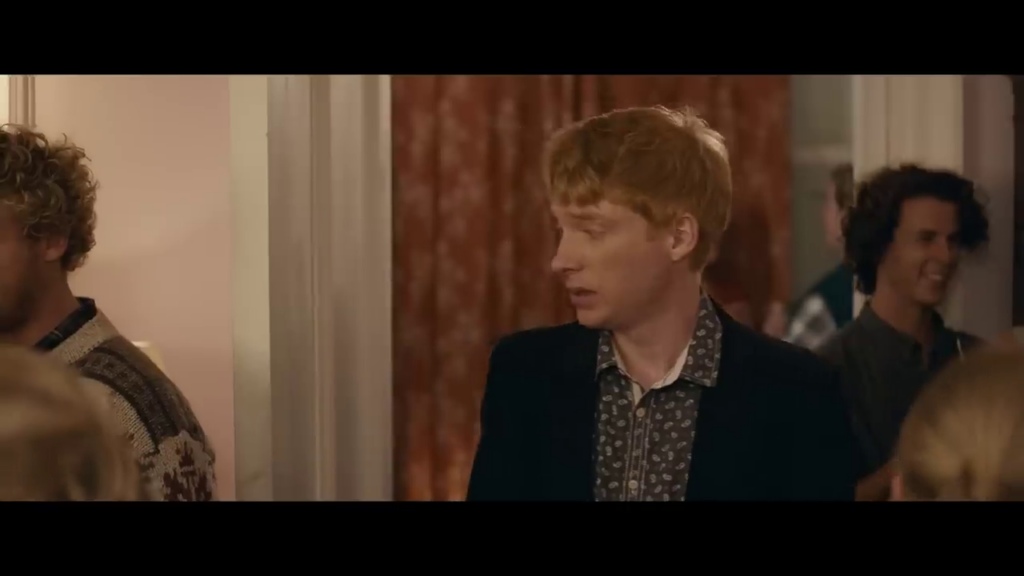
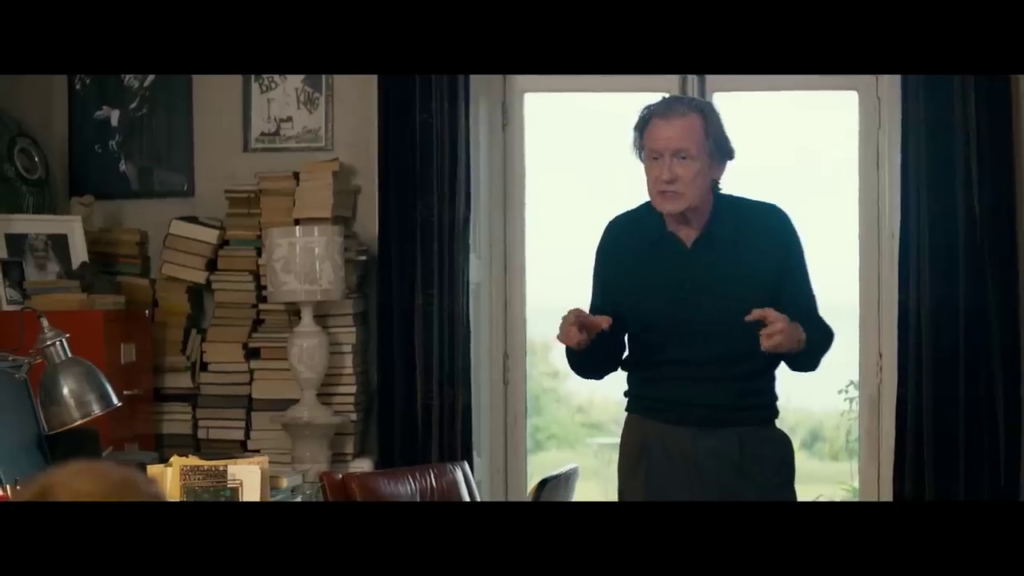
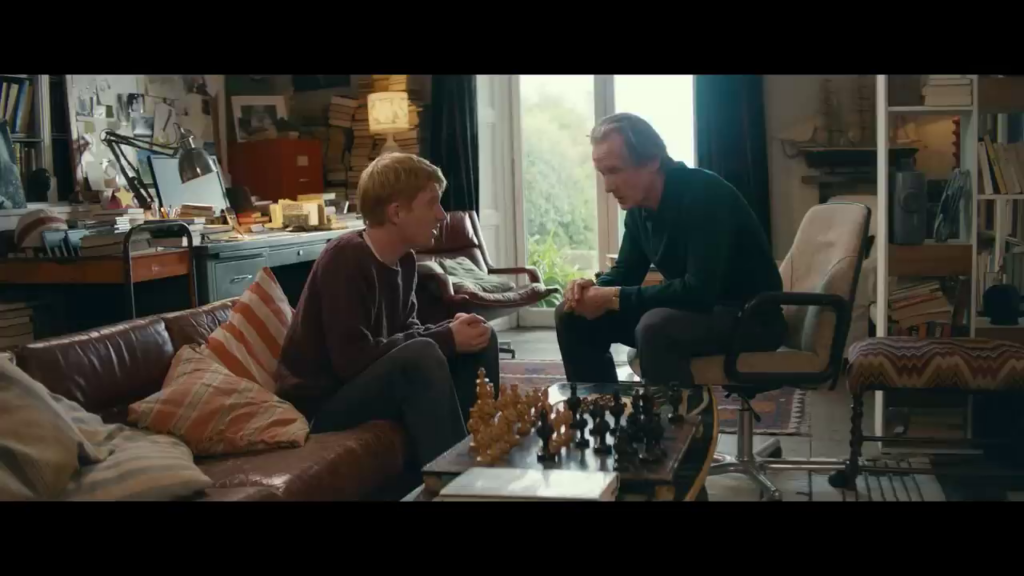
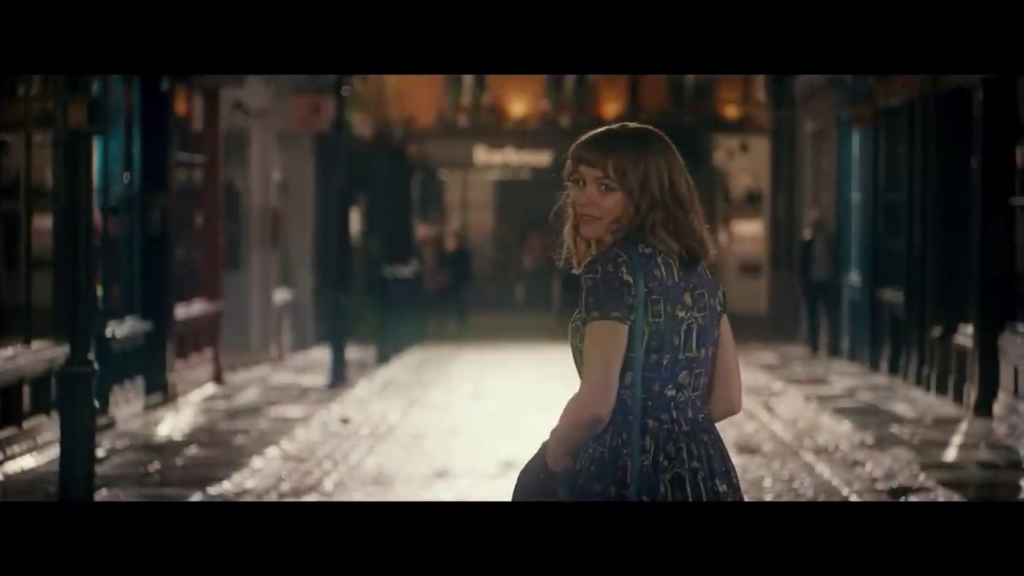
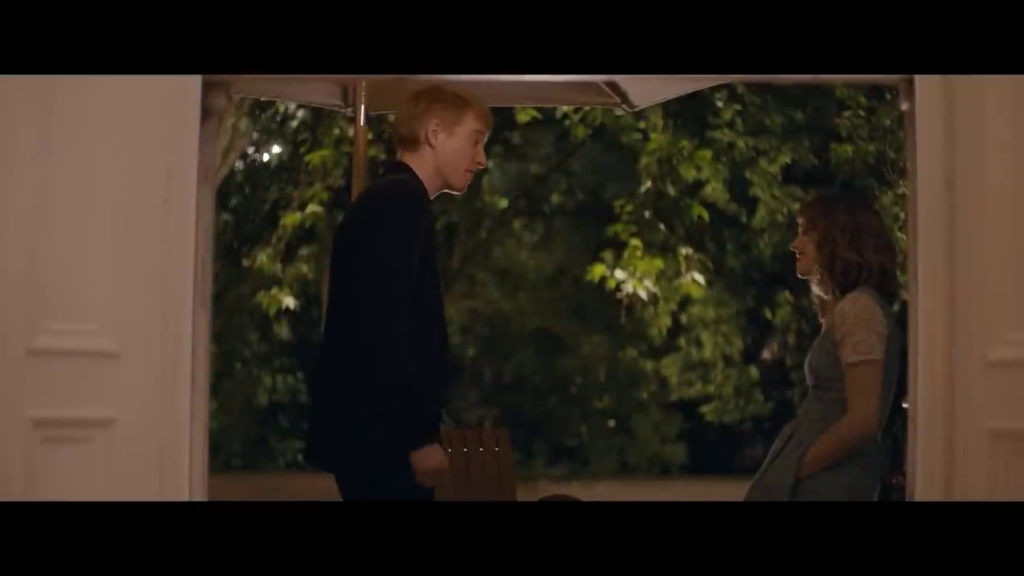
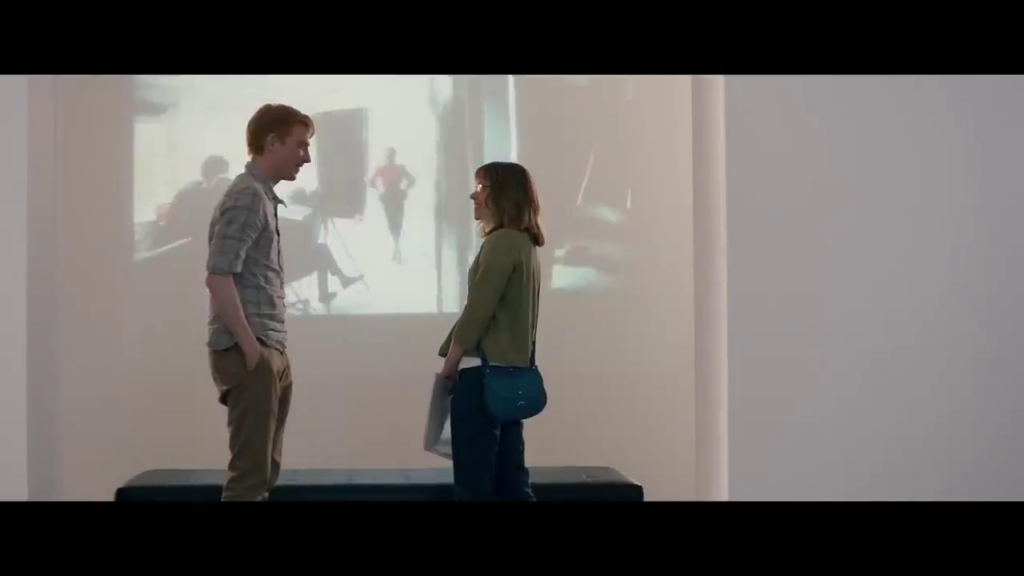
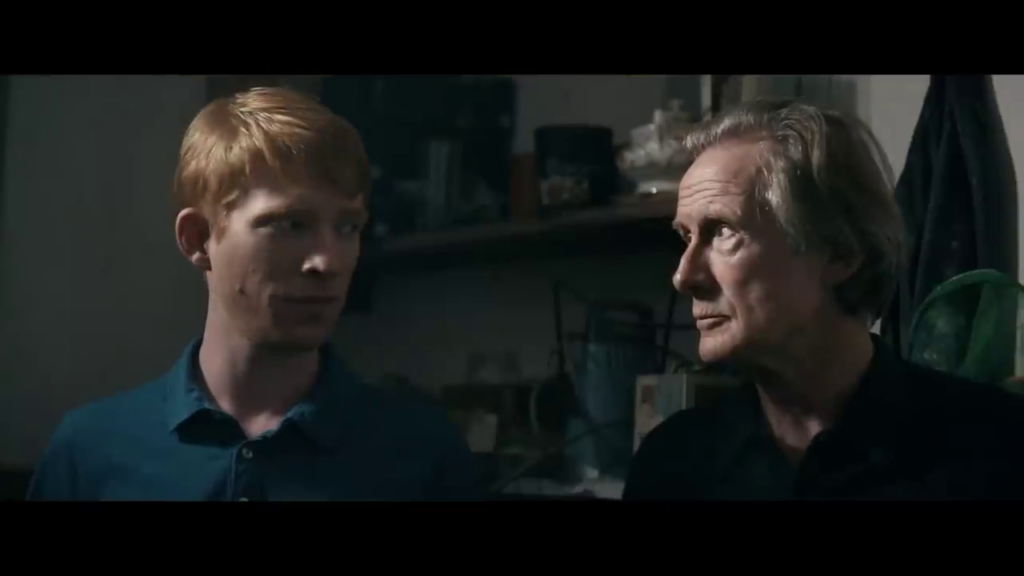
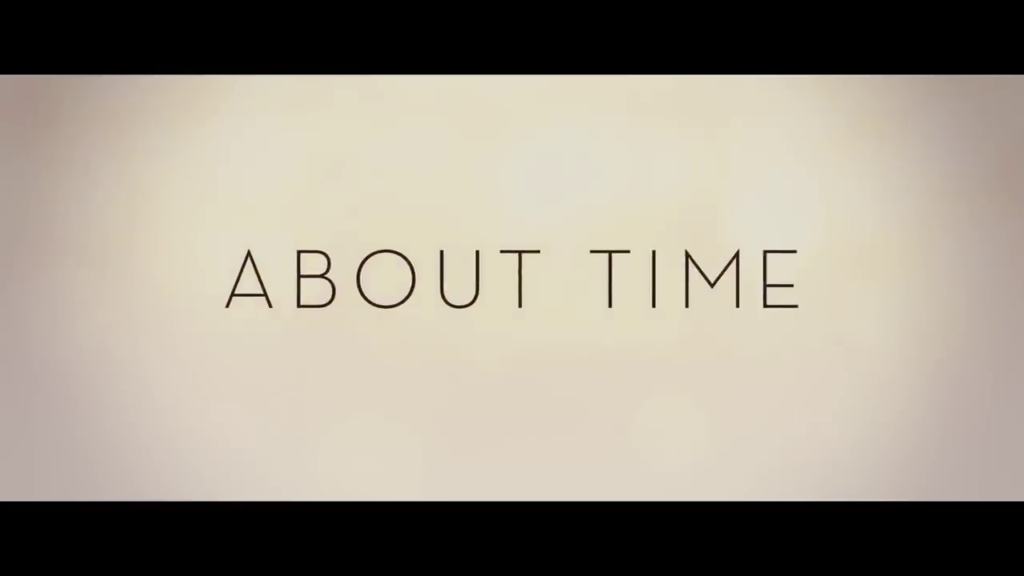
About Time (2013)
Film review #645
Director: Richard Curtis
SYNOPSIS: Tim learns from his Father that the men in his family have the ability to travel back in time. He uses this power to help improve his life, as his Father suggests, and upon meeting Mary, he does everything he can to make their relationship work…
THOUGHTS/ANALYSIS: About Time is a 2013 sci-fi romantic comedy film. After a lacklustre New Year’s Eve party, Tim Lake learns from his Father that the men in his family (himself included) have the ability to travel back in time. He decides to use this power to improve his life by finding love. When he encounters Mary by chance, he has to use his powers to make sure their relationship is perfect. The film focuses on using these powers within the range of the romance genre, and sidesteps a lot of the other issues that this power could address: Tim is clearly established from a well-off family that get along well, so has no real need to use his powers for money or the other typical things people would try to get if they had these powers. It pigeon-holes the film in only dealing with certain things, but it’s a romance film, so it should have a specific focus I suppose. When he meets Mary, he has to use his powers to make sure their relationship goes right, but when he inadvertently changes the past so they never meet, he has to go back in time to try and meet her by “chance,” which means he learns where she is going to be at certain times. now, I suppose you could argue that this is “okay” since they already did meet naturally and hit it off before Tim changed the past, so arranging himself to meet her by chance is just him repeating what he had done, but there’s still this feeling of him being manipulative about the whole situation that just irks me, and remained with me throughout the film. The film never once raises this dilemma that he changed the past so he should maybe just deal with it, and just carries on as if it’s not really an issue. The fact also that Mary never finds out about his powers really makes the relationship very one-sided.
The film is, despite the film’s title, about love, and hinges on the developing relationship between the two main characters. Both Tim and Mary have some compatibility, and there’s certainly some charm in their interactions. The film offers us a fairly well-rounded picture of the couple, from their first meeting, to marriage and children. The film doesn’t really offer a climax of any sort, it just levels out as Tim learns to make the most of life one day at a time. All of the issues and problems faced throughout the film don’t really feed into this climax, and are often easily fixed by the whole time travel business so they never happened, and no one really develops via their mistakes. As mentioned, Tim and Mary have a certain amount of chemistry, and they deviate enough from the typical romance leads, but their quirky personalities that ramble on in that quirky fashion is not going to endear them to everyone, and even if you appreciate the charm their base awkwardness brings, it does get old after two hours. We don’t really get a sense of any of the other characters either; we get a narration introducing them at the beginning, and that serves to sum up their whole character throughout the film, so again there’s very little development or anything new than what is immediately established.
The film takes a bit of a shift towards the end as Tim’s Dad passes away, and Tim begins to go back to the past to speak with him before he no longer can. It offers a touching finale to the film, but also it just doesn’t really fit in with the romance between Tim and Mary, as the latter is pretty much side-lined. I get that Tim’s dad first introduced him to the power, and is a secret between them, so it kind of closes the circle of the films story, but it would have been nice for it to at least play more of a part throughout the film so everything is weaved together a bit better. It is at this point as well that the film just throws its own rules about time travel out of the window, having Tim go back visiting his father before he died and such. The film hand-waives the issue of a butterfly effect of altering the past away in the beginning, and as mentioned Tim never really has to deal with the consequences of his actions. The romance film is director Richard Curtis’s bread and butter, but adding in the time travel element creates a lot of issues, as I always say: if you’re going top have time travel in your film, you need to know how it works, or it will quickly unravel the whole film with plot-holes and the like.
About Time has enough charm and chemistry to carry out its duties as a romance film, but suffers from side-stepping the problems that time travel inevitably creates, and ignores addressing consequences in fear of disrupting its attempt at creating the perfect romance through the redoing of very specific moments. There’s a bit too much of holding the film together on vibes alone rather than exploring its premise with any amount of depth. It’s Richard Curtis doing what he does best, but lack of any real plot or development of the characters leaves little substance underneath. It hits the right notes when it needs to, but it’s quite muddled when it needs to how it got there. maybe it’s charm can carry you through the film, or, like me, maybe it just flounders a few times too many.
-
#638 – Big Ass Spider! (2013)
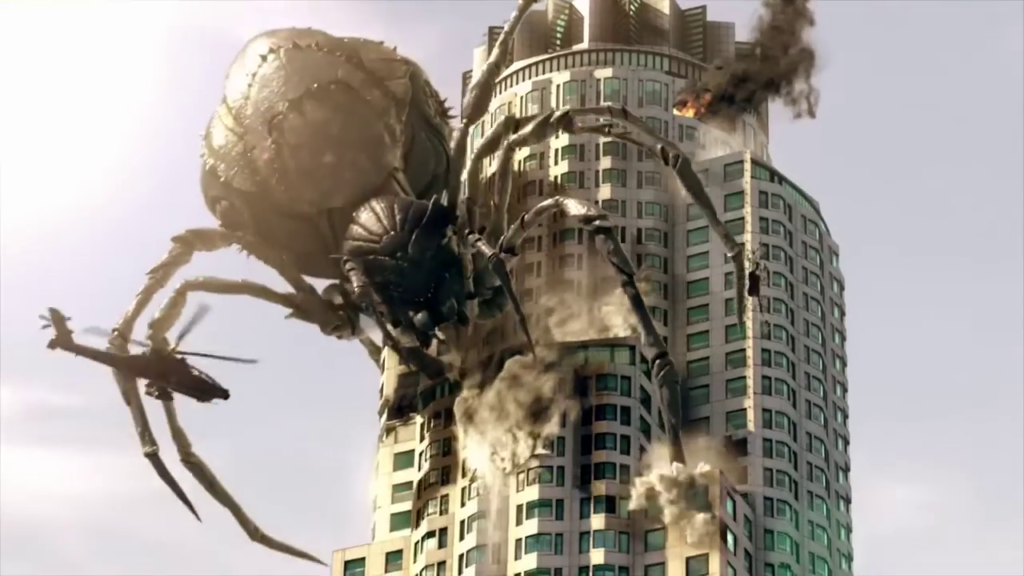


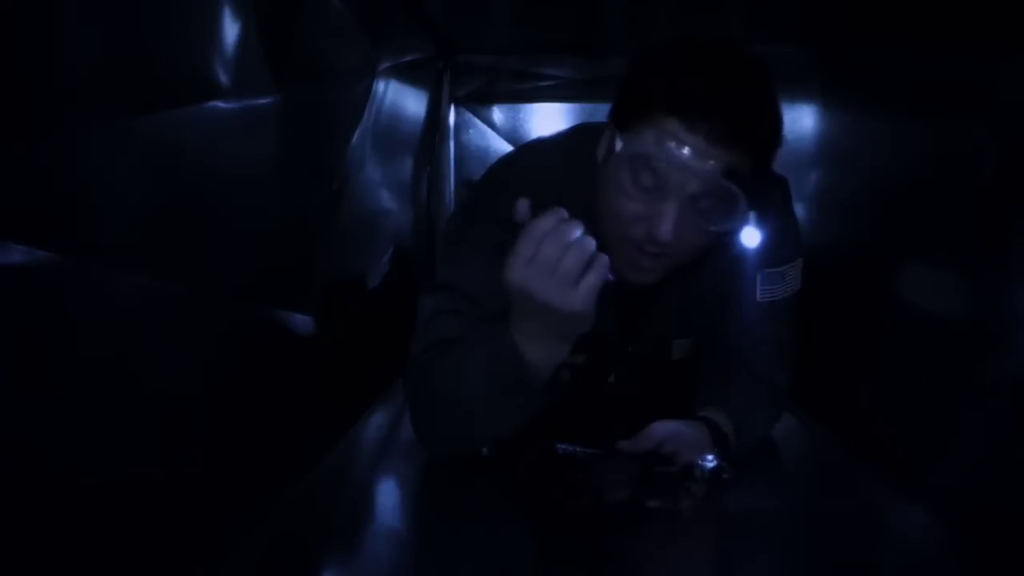

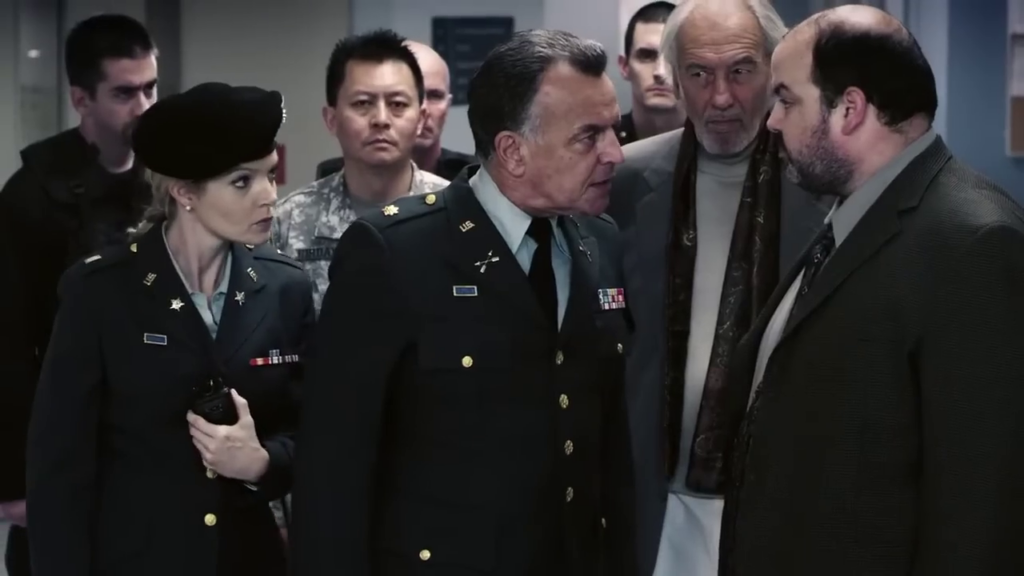
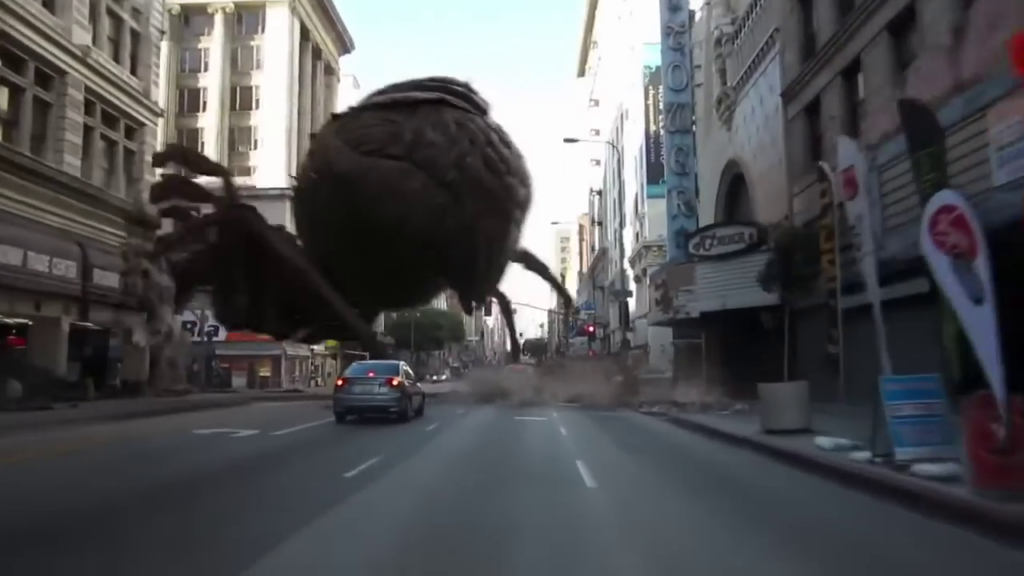
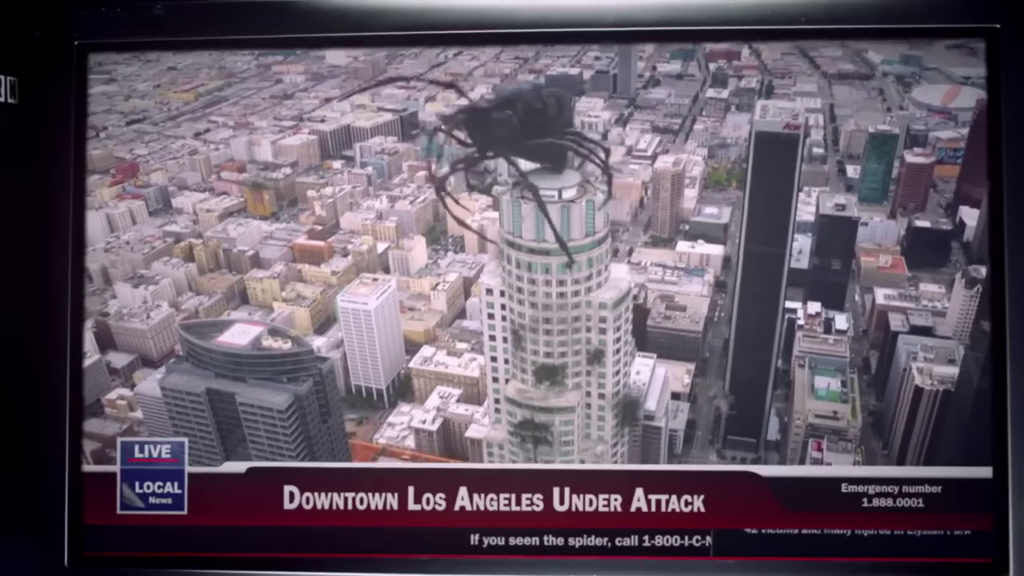
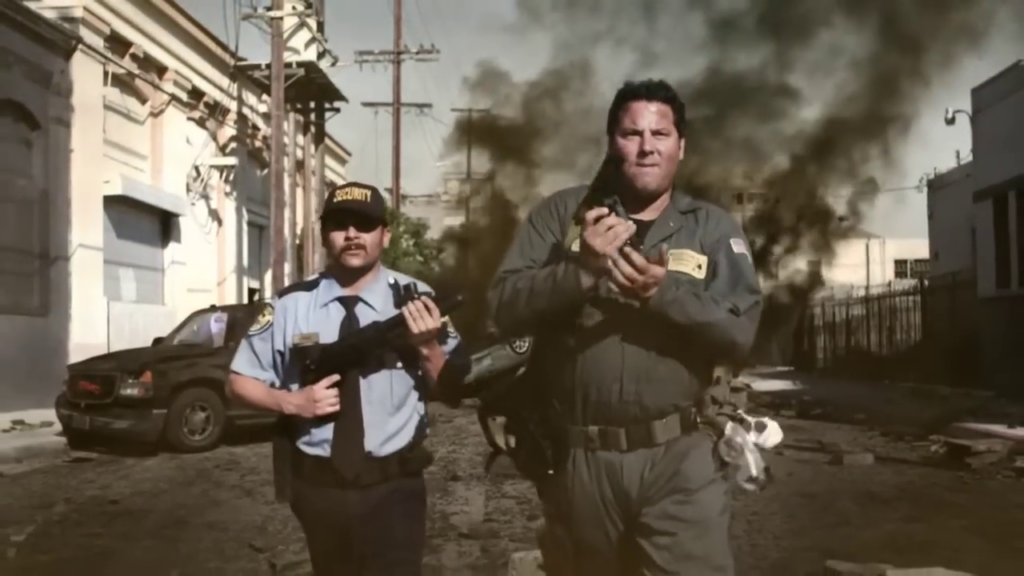
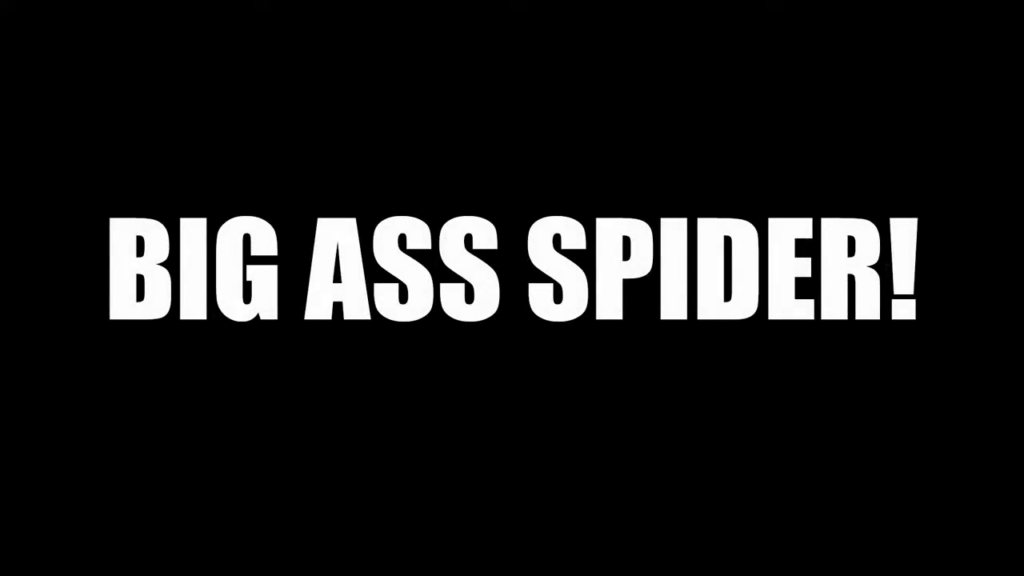
Big Ass Spider! (2013)
Film review #638
Director: Mike Mendez
SYNOPSIS: A lowly insect exterminator gets in over his head, as a giant spider that escaped from a military research facility starts to wreak havoc on a hospital. It’s a race against time to destroy the spider before it grows ever larger and begins to reproduce…
THOUGHTS/ANALYSIS: Big Ass Spider! is a 2013 sci-fi film. Starring Greg Grunberg as cash-strapped pest controller Alex Mathis, he gets caught up in the usual sci-fi shenanigans of a mutant experiment gone wrong, and escaping from a military research lab to wreak havoc. Slipping into the role of a film that recognises that is cheap schlock and a homage to the b-movie monster film in equal measure. It doesn’t try to be anything else, and it feels fairly comfortable in it’s role, as the cast try to stop the spider before it continues to grow and eventually reproduce. The film does have some highlights though: the gore is well done, with faces being ripped off and the like, and adds a bit of excitement to the film. On the other side, the film keeps a sense of fun, so you’re never bogged down too much in the film trying to take itself seriously. maybe these two things don’t mix too well, but in keeping with it being cheap shlock that knows what it is, it isn’t too much of a problem.
I thin the best way I can sum up this film is that it feels like a cartoon: the characters are seriously one-dimensional, and every scene with them in is so predictable with regards to what they are going to say. The prime example of this is the security guard whose only role is being the comedy relief and being Mexican: every joke revolves around him being Mexican, and eventually you do get tired of it. The film also follows the old b-movie trope of having a solitary female character, who of course serves as the main characters love interest. I know it’s meant to play on these typical tropes, but the film really clings to them so closely that it doesn’t give itself room to do anything else. I think the best way to describe this film is that it feels like a cartoon: while there may be some serious stuff happening, the characters are playing very strict and flat roles, and never stretch out beyond them. That’s not necessarily a bad thing though. Sure, Big Ass Spider! is predictable nonsense that won’t surprise you or change your life, but it does focus on having a bit of fun, and it genuinely shines through. Sometimes it feels like it’s trying too hard to stick to that one-dimensionality in the characters and setup, but it’s honestly more fun and entertaining than a lot of similar movies out there. The effects are cheap, the characters are predictable, but still manages to hold itself together for the runtime to at least make it entertaining.
-
#627 – Lucy (2013)
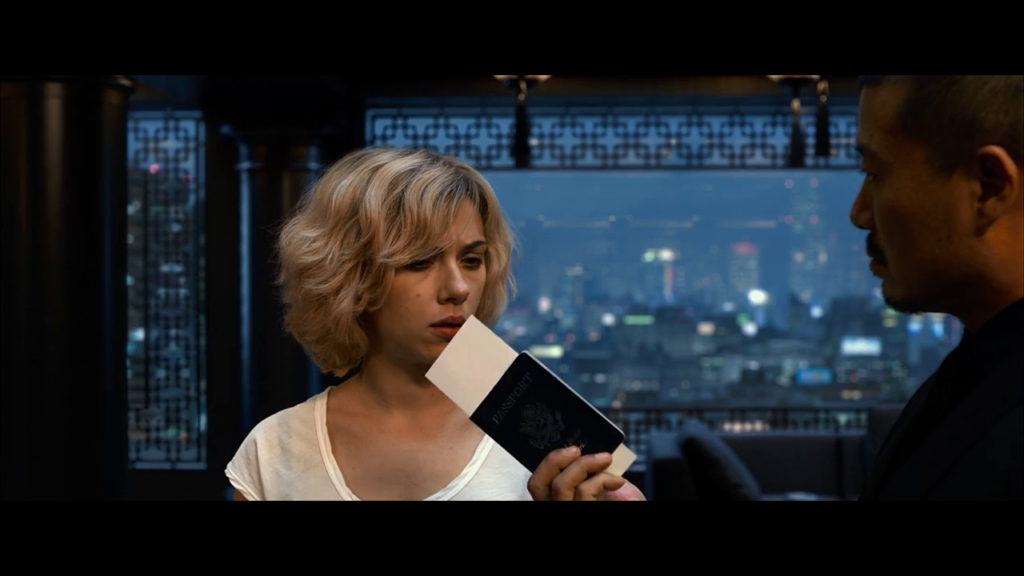

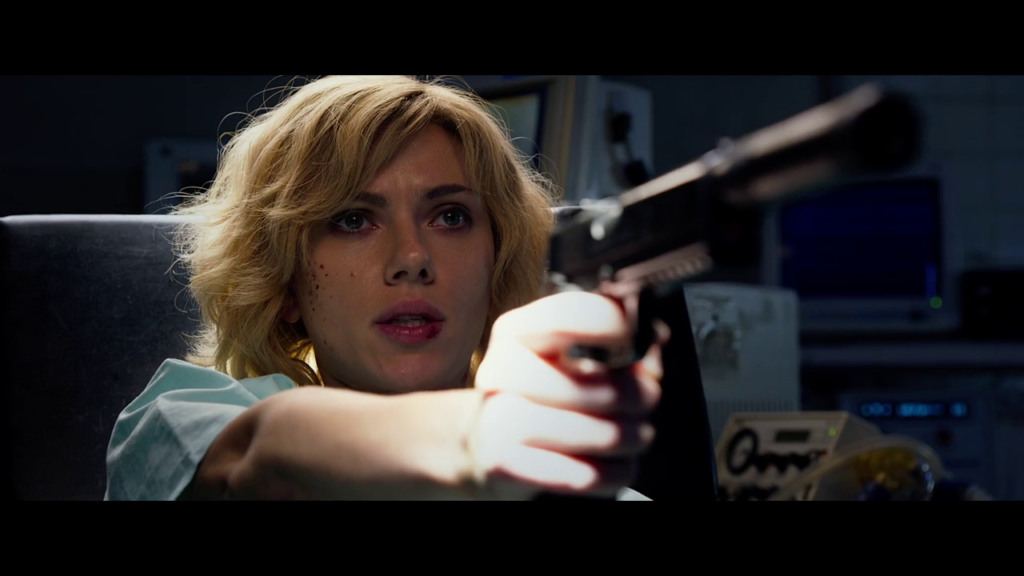
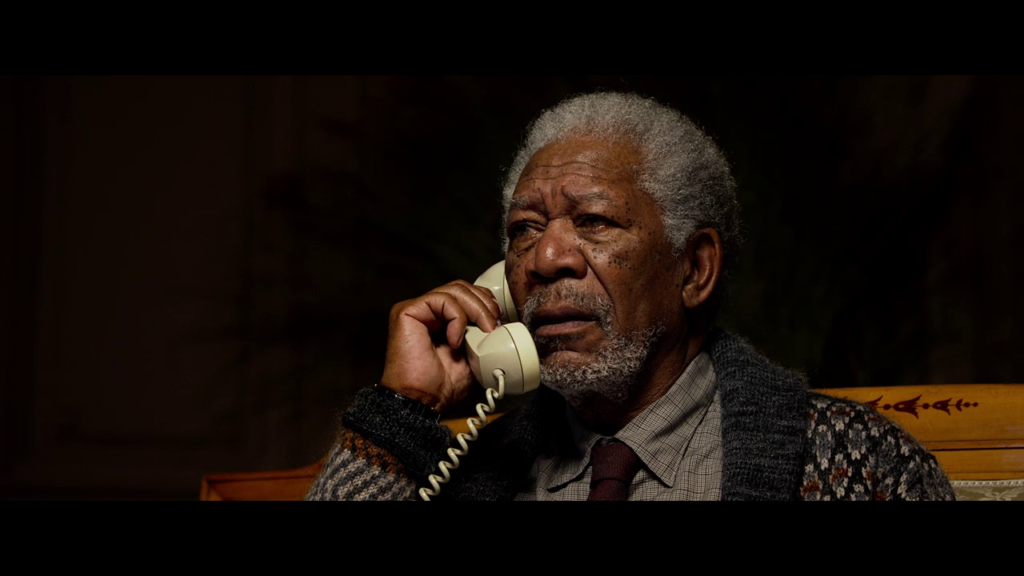
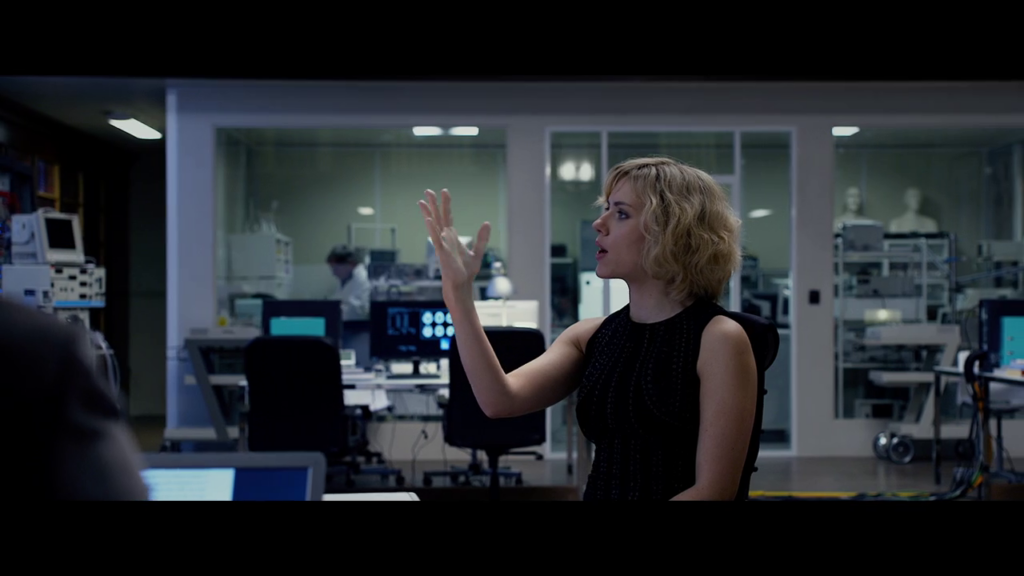
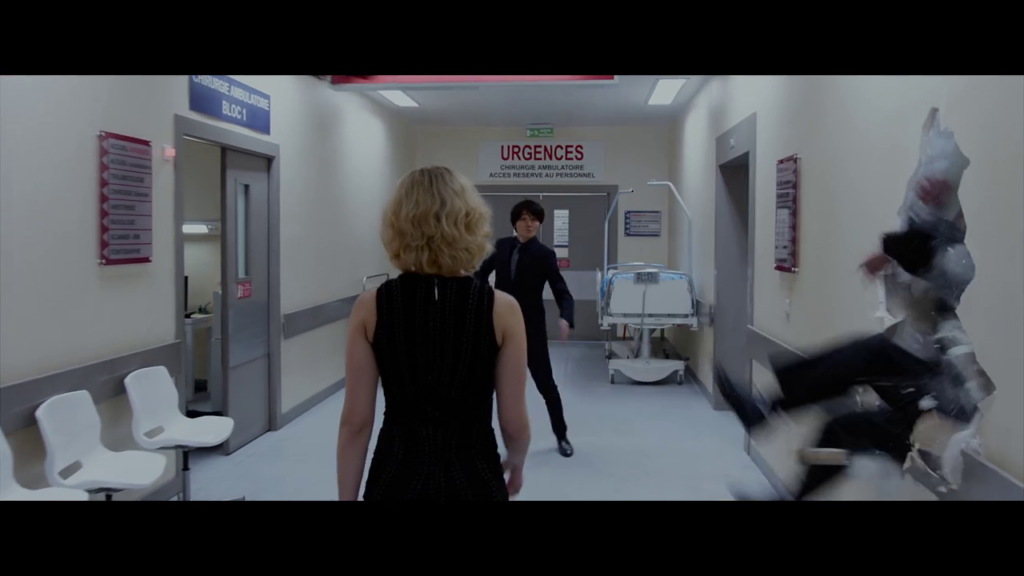
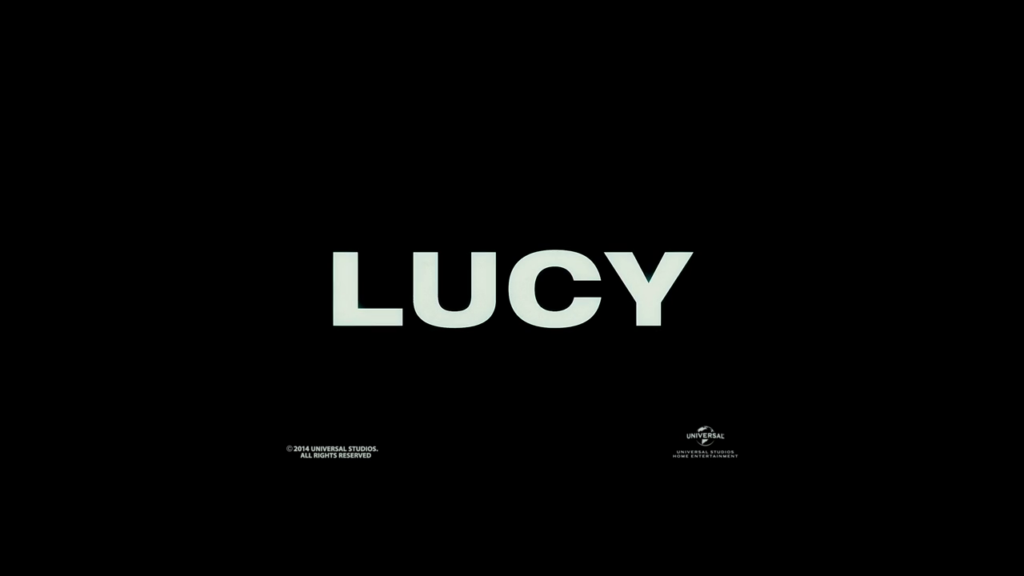

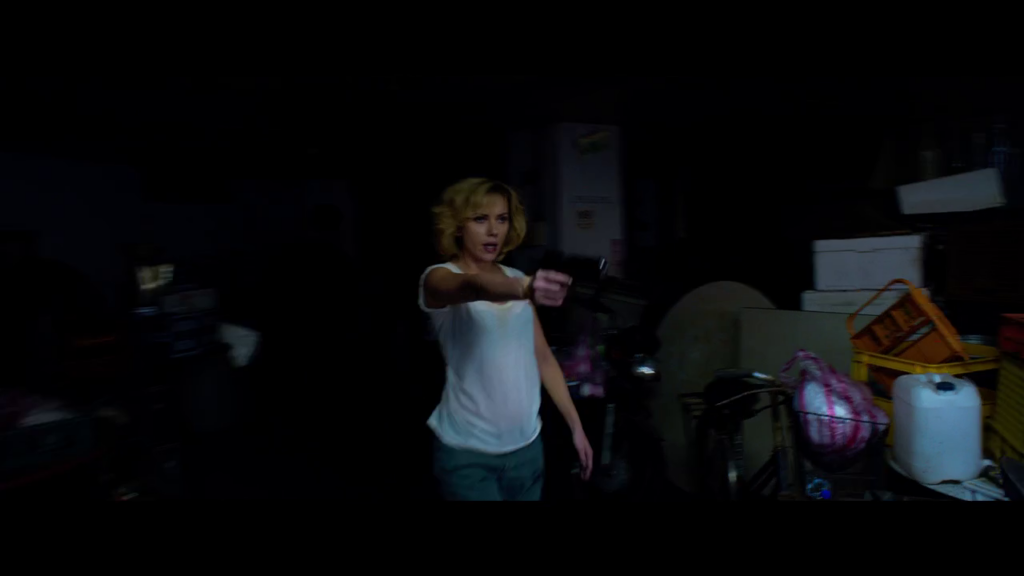
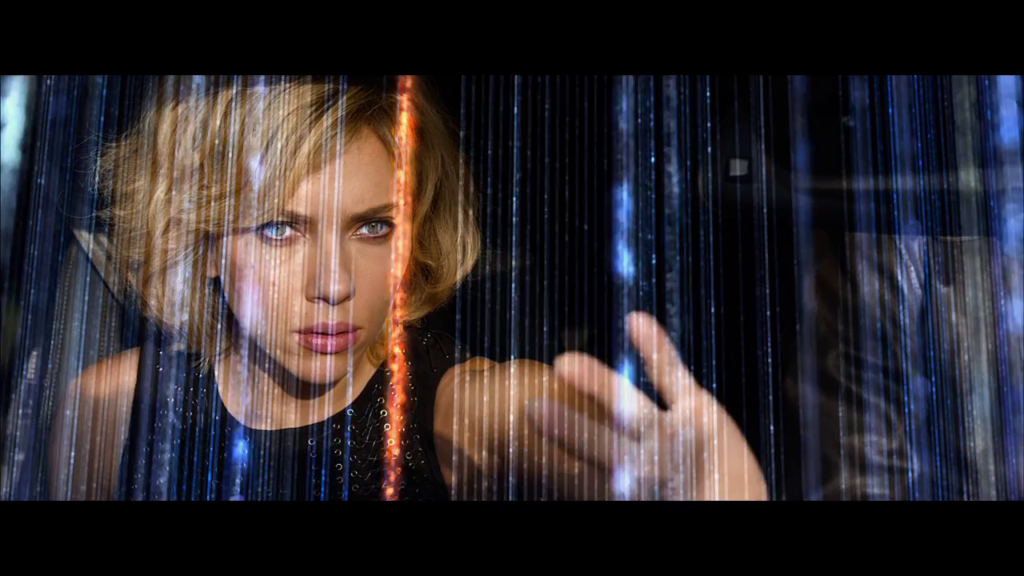
Lucy (2013)
Film review #627
Director: Luc Besson
SYNOPSIS: A young woman is tricked into delivering drugs for a organised crime ring. She has the drugs planted in her intestines to smuggle through the airport, but when the bag starts leaking, her body absorbs the experimental substance, giving her superhuman abilities. As her powers increase and her grip on reality fading, she reaches out to a Professor in the hopes of passing on her experiences before she transcends to whatever happens next…
THOUGHTS/ANALYSIS: Lucy is a 2013 sci-fi film. Lucy is given a briefcase full of experimental drugs to give to a Korean crime syndicate. Things quickly escalate as she is roped into smuggling a packet of drugs to Europe inside her intestines. When the package inside her starts leaking, her body starts absorbing the drugs, unlocking more of her brain power and slowly transcending human existence. She enlists the help of a university Professor to help her pass on her experiences before she unlocks one hundred percent of her brain and transcends her very existence. Blending action, philosophy, and a sprinkle of humour, Lucy achieves a finely balanced weave that viewers can ride on from beginning to end. I enjoyed this film for mainly two reasons: the aforementioned balancing of action, philosophy, suspense, humour and more that allows the film to hit the ground running and never stop. The second is that it’s short: clocking in at just over one and a half hours (about one hour and twenty four minutes excluding the credits), it does what it needs to do and is over. The film covers the philosophical ground of what it means to be human, but doesn’t have the big scenes of silence like 2001 or something similar to give us the space to reflect that. That’s not a bad thing though, it just offers us a different way of doing this kind of speculation.
The film revolves around the popular misconception that humans use only use ten percent of our brains, and speculates what would happen is we started to use more: as Lucy unlocks more of her brain power, she is able to control more and more things around her, including her appearance, matter, and so on. The film has a clear start and end point, and moves along fairly evenly, while still keeping things exciting. The action scenes are well choreographed, and while the premise of the film is based on the aforementioned urban myth about the use of the human brain, it still evokes enough wonder and speculation about what makes us human and purpose to sow the necessary philosophical seeds. The film bears the fingerprints of it’s director Luc Besson (The Fifth Element, Valerian and the City of A Thousand Planets), with colour, energy, and purpose in all the scenes, and Scarlett Johannsen portrays Lucy as both a human figure, who is slowly becoming something else entirely well. The more you think about the scie3ne behind the film, the less it really makes sense, but the philosophical ground is fairly sound. Lucy is a film that never overstays its welcome: it’s careful balancing of action, speculation, and humour does everything it needs to do with a sense of style, and makes it an entertaining ride from start to finish. Just a damn good ride really.
-
#574 – R.I.P.D. (2013)
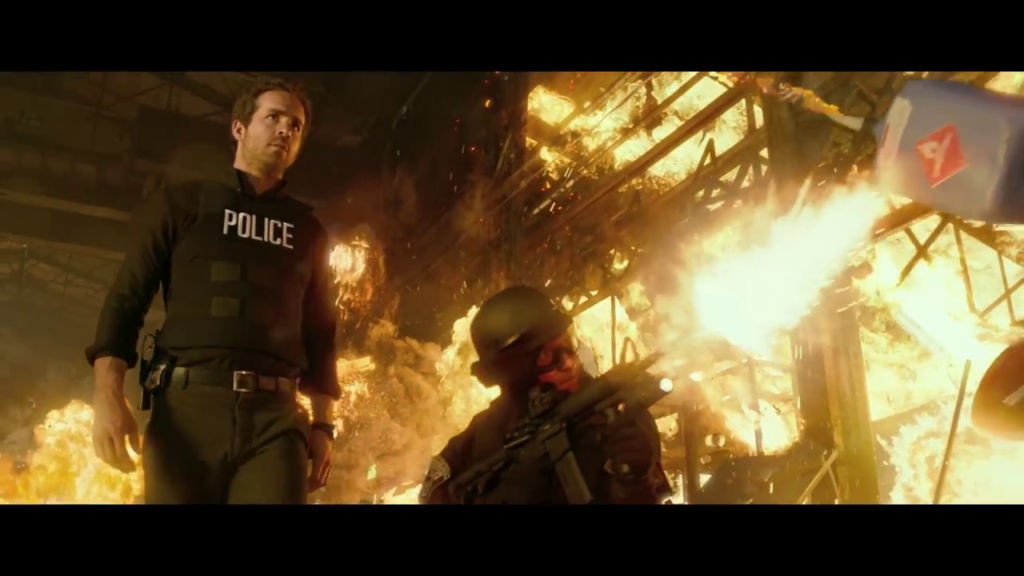
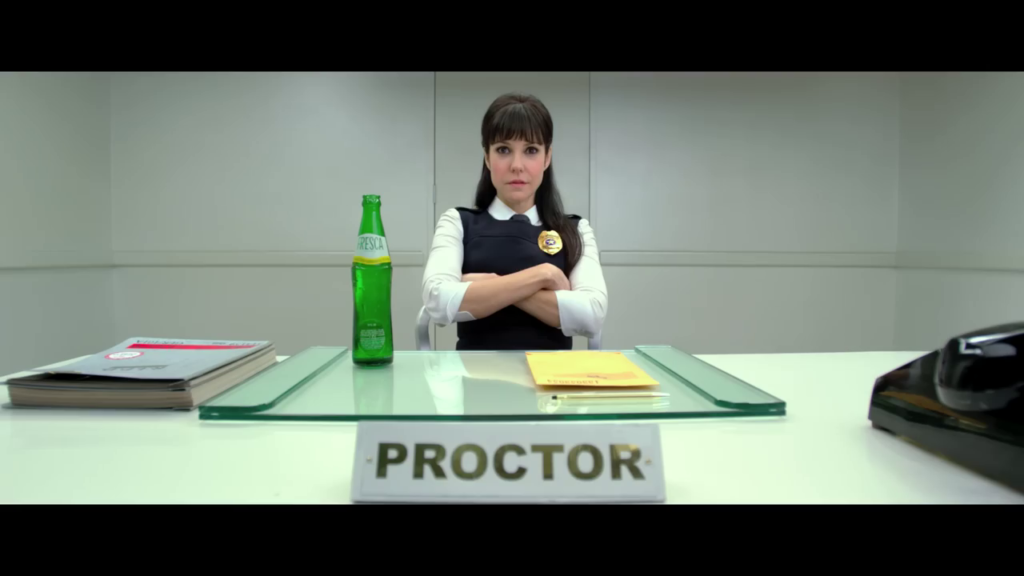
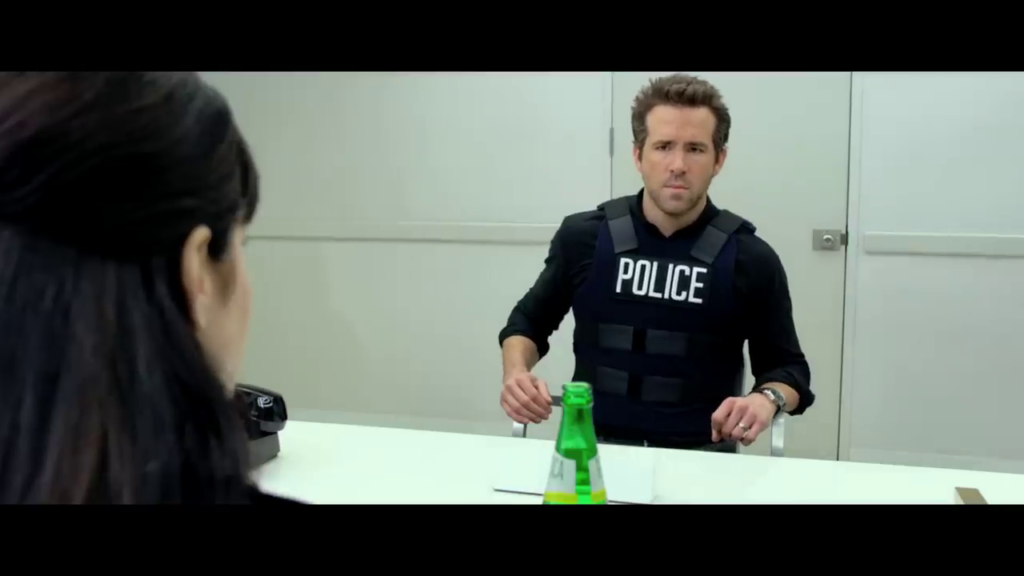
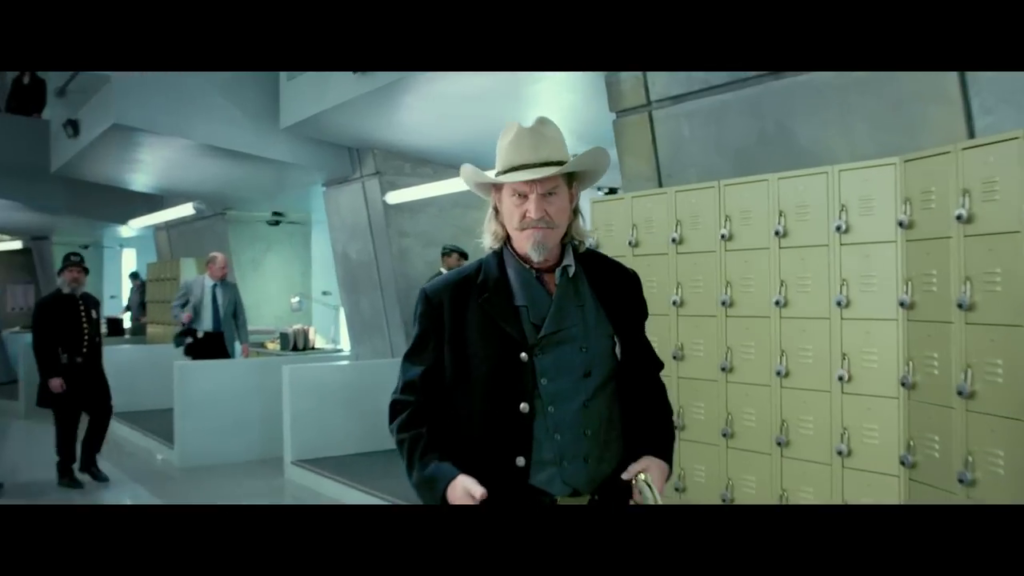
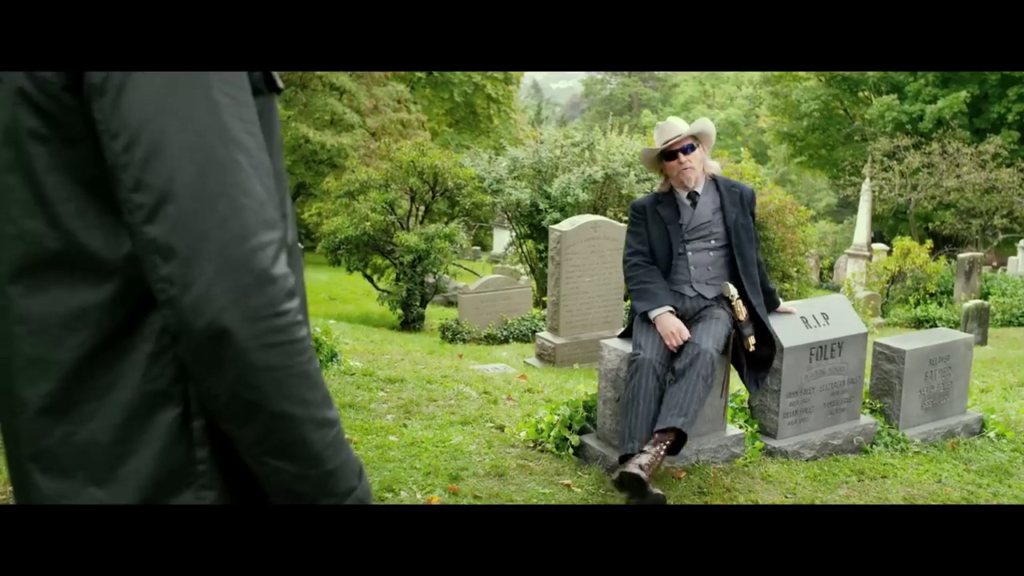
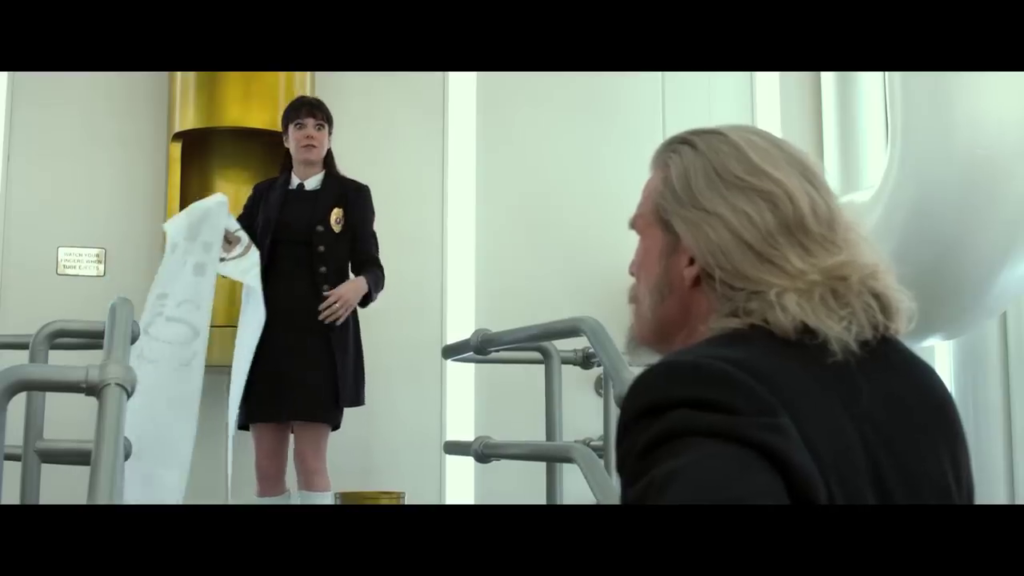
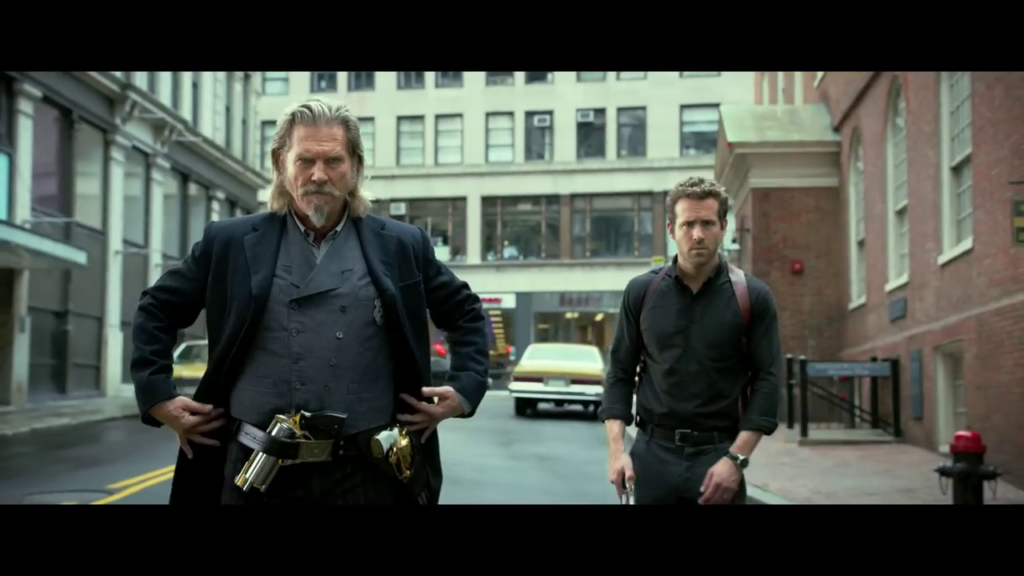
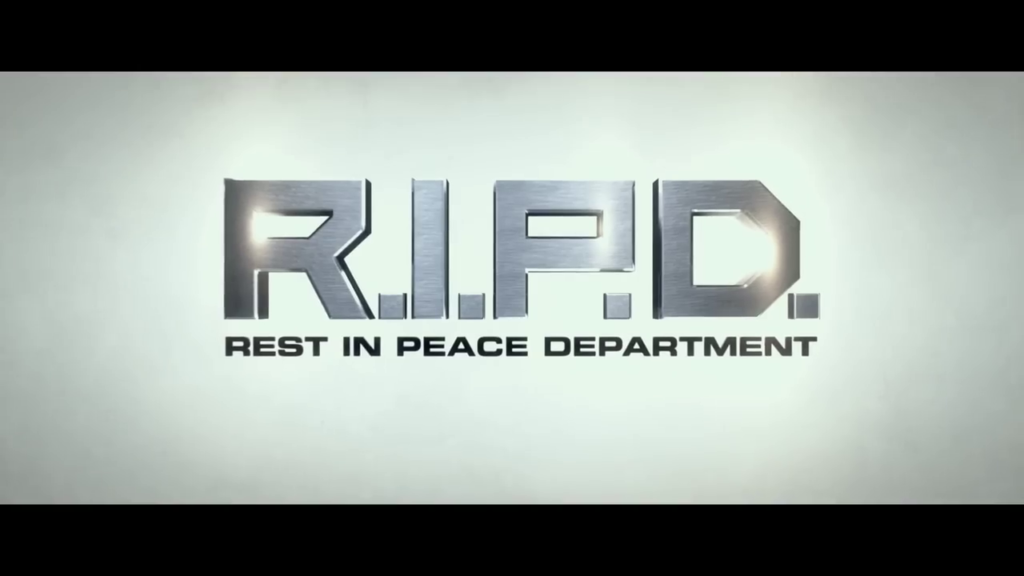
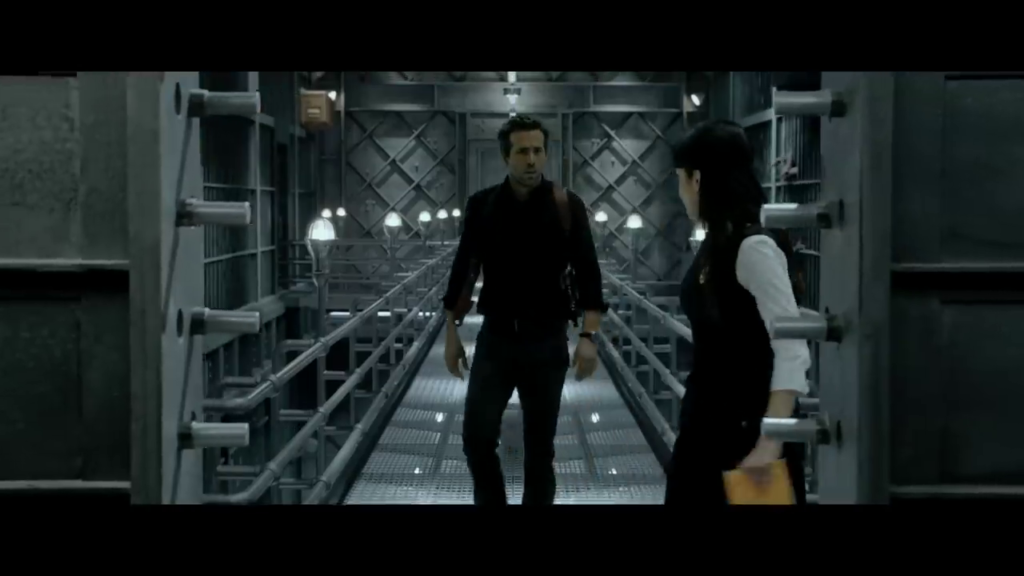
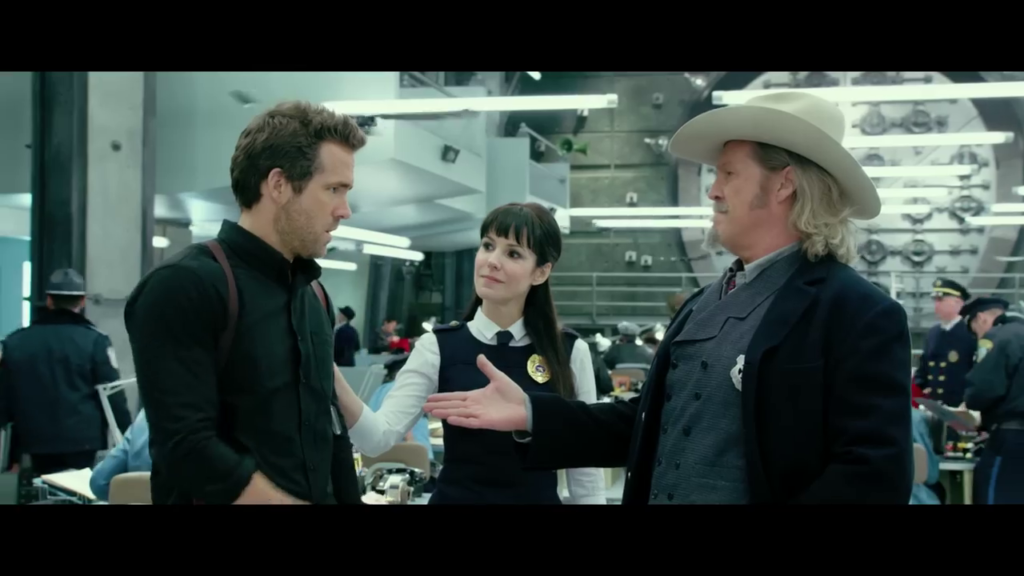
R.I.P.D. (2013)
Film review #574
Director: Robert Schwentke
SYNOPSIS: Police officer Nick Walker is killed by his partner Bobby Hayes as he wants to get rid of some gold that the two found on a random drug bust. He finds himself recruited into the R.I.P.D.: The “Rest in Peace Department,” which is a supernatural force whose purpose is to hunt down people that have died and still roaming the Earth. Partnered with a veteran officer, the two discover the circumstances behind Nick’s death are tied to a much bigger plot…
THOUGHTS/ANALYSIS: R.I.P.D. is a sci-fi action film based on the comic book of the same name. The film opens up with police officers Nick Walker (Reynolds) and Bobby Hayes (Bacon) are discussing some gold they took on a random drug bust, but kept it for themselves. Nick decides he is going to turn the gold into evidence, and Bobby decides to kill Nick at their next drug bust when no one else is around. Nick finds himself dead, but before he is whisked away to the afterlife, he is brought to the R.I.P.D. to be recruited as an officer who specialises in thwarting people who have died and are still hanging around Earth, causing them to transform into hideous creatures called “Deados.” Nick is partnered with veteran officer Roicephus “Roy” Pulsipher, who was a sheriff in the Old West before he died, and the two manage to stumble upon a plot that threatens the whole world, which they naturally have to put a stop to. The story can very easily be summed up as a combination of the films Men in Black and Ghost: you can see certain scenes are almost complete cut-and-paste jobs from these two. Alongside this, it doesn’t have either the worldbuilding or quickfire comedy of Men in Black, nor the emotional depth of Ghost, leaving a film that just completely fails to build its own identity. The plot of an ancient artifact being built that will wipe out the Earth is basically the plot to every Men in Black film. It feels like the script was just finished at it’s first draft, and no one bothered to add in any specific details or worldbuilding to give it some depth. Despite the criticisms, the film actually does a good job of avoiding any boring exposition, and just jumps right into everything and explaining things as it goes. Part of this might be because there’s not much to actually explain, but at least the film manages to keep momentum going over the rather short runtime of just over ninety minutes.
The characters are very much what you would expect: Ryan Reynolds is Ryan Reynolds: it doesn’t matter what the name of the actual character, because he’s just playing the same character he always does. Jeff Bridges playing Old West lawman Roeciphus “Roy” Pulsipher is certainly the stand out performance. Again, he’s not got much depth beyond being the “grizzled veteran” type, but it’s guaranteed fun every time he is on screen. Kevin Bacon as the villain is unremarkable, and Nick’s wife Julia barely leaves a mark. As mentioned, the film lacks and seems to avoid the emotional depth that would have made their relationship and the significance of Nick’s death a solid plot point. Even if it was, it wouldn’t have been any different from the plot of Ghost (again, as mentioned). The film doesn’t seem to know what it wants its audience to be: it doesn’t have the established jokes and wit to be a comedy movie for young adults, the lack of emotional drama for older adults, and is a bit too adult for younger viewers, so the film just rushes straight through the middle with nothing sticking to it.
It’s difficult to find something else to say about the film, because there’s not much content to comment on. The film was blasted for being derivative of other films and a box office bomb, making nowhere near its budget upon release. However, I don’t think it’s all bad: sure, it has no substance, but it’s paced well, and maintains its momentum and energy through to make it a pretty entertaining film with no lulls. R.I.P.D. is the epitome of mindless cinematic entertainment that brings nothing new or significant to the table, but a short bit of fun if you’re in the mood.
-
#567 – Snowpiercer (2013)
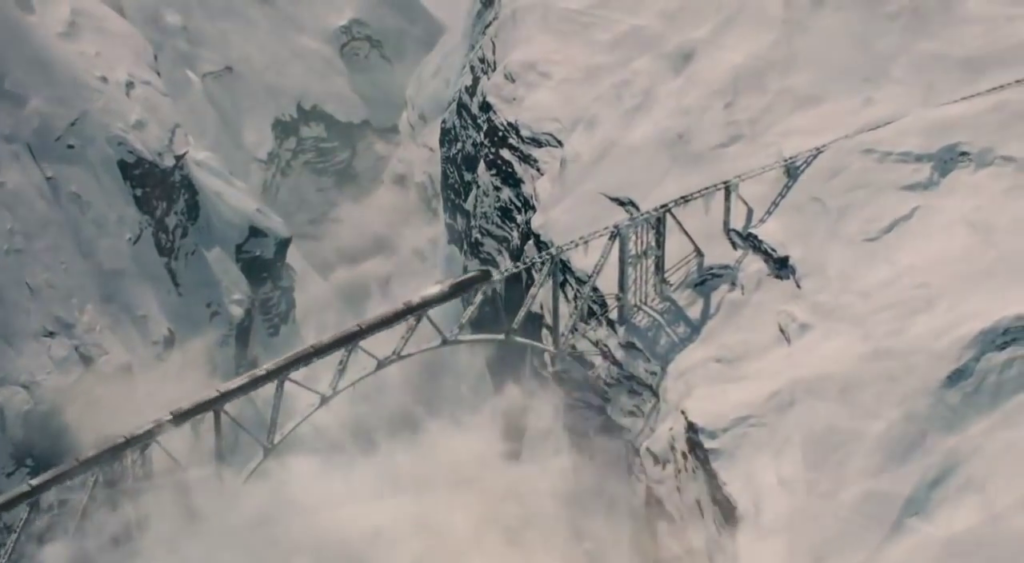
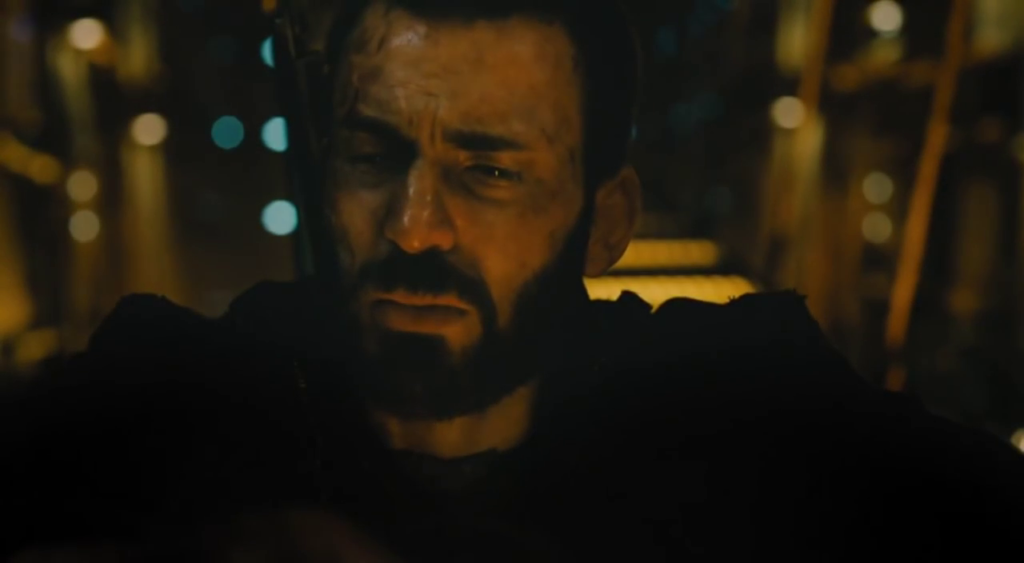
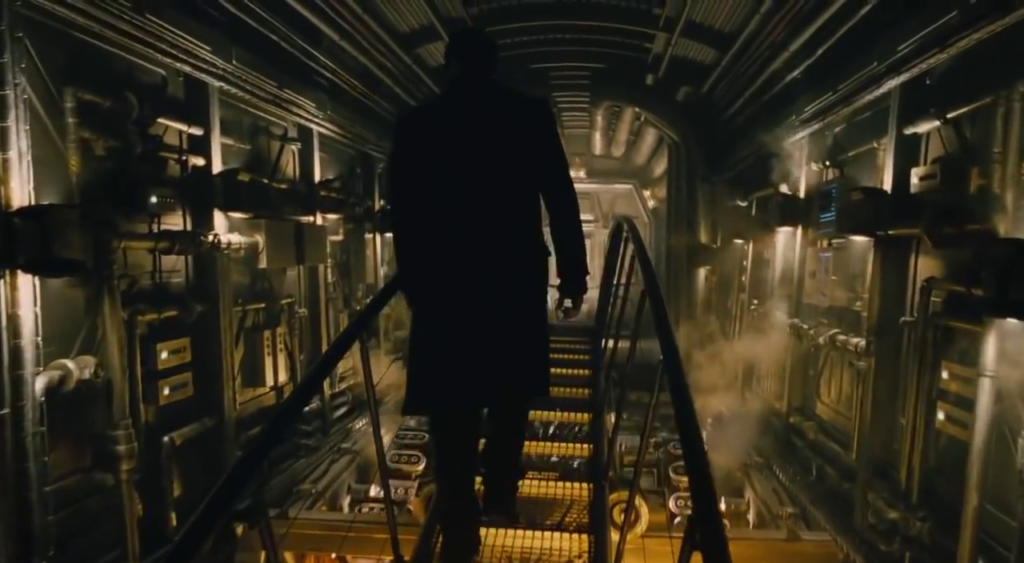
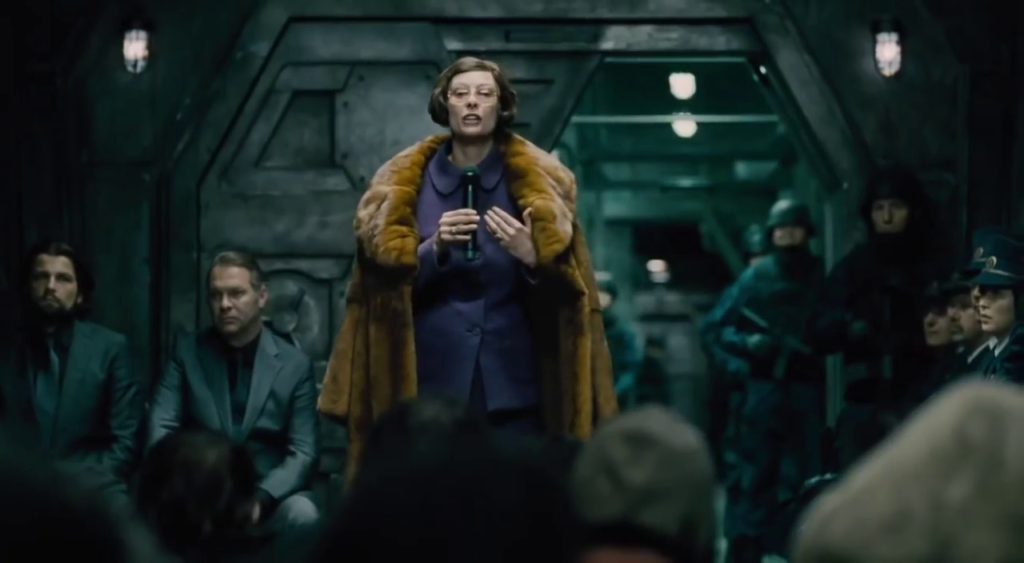
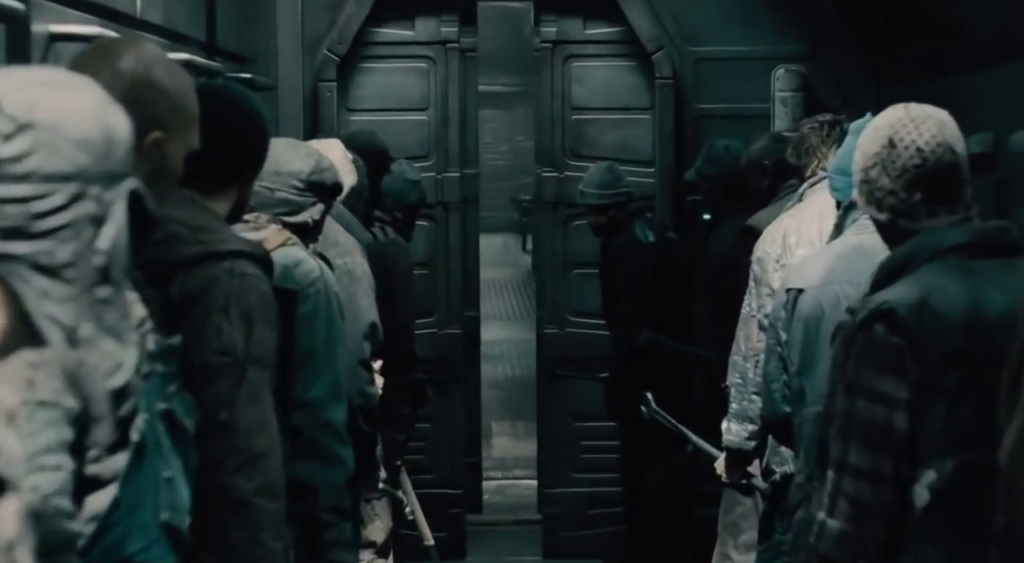
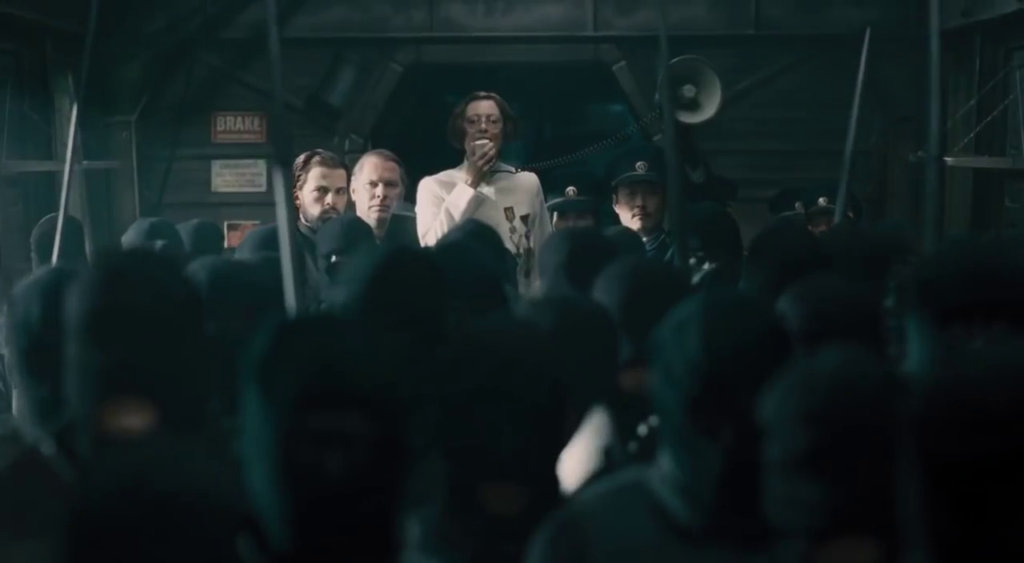
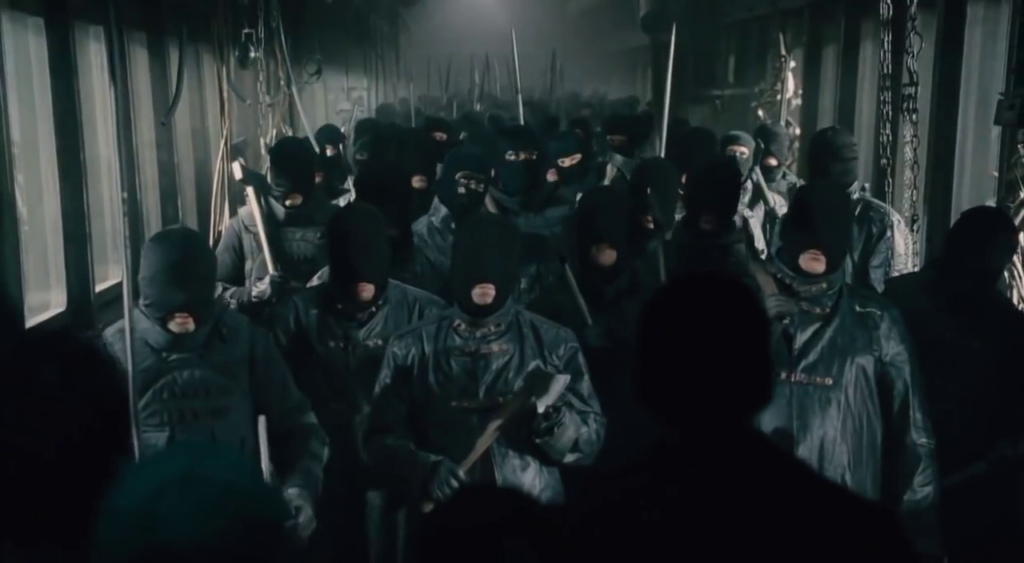
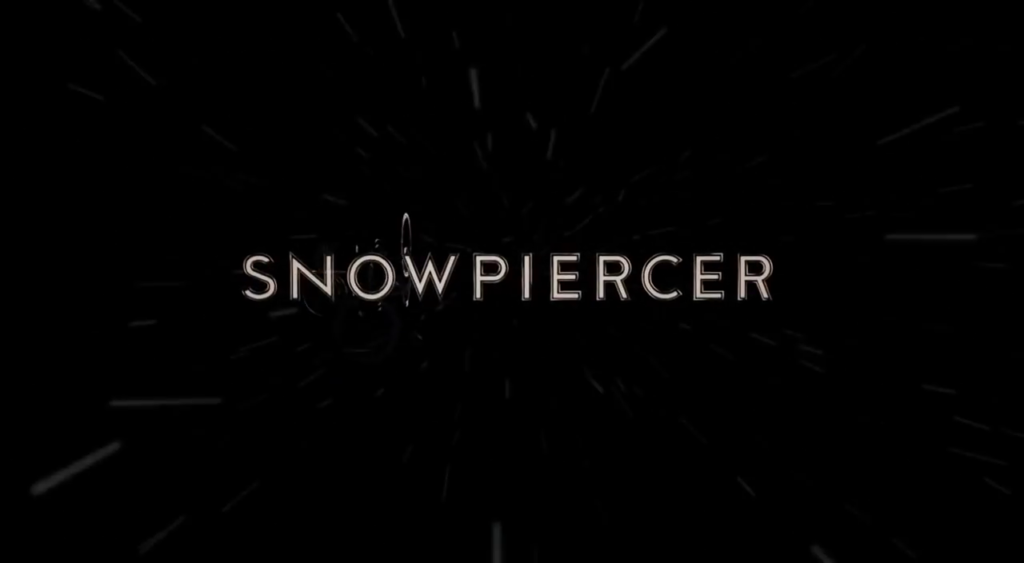
Snowpiercer (2013)
Film review #567
Director: Bong Joon-Ho
SYNOPSIS: After an attempt to halt climate change by releasing a chemical into the atmosphere, the Earth has turned into a frozen wasteland. The only survivors live aboard a trans-continent train that takes one year to travel the globe. At the front of the train, the people live in luxury, while those at the rear live in squalor. Among them is Curtis, who is scheming to revolt and make his way to the front of the train, and lead the people there to a better life…
THOUGHTS/ANALYSIS: Snowpiercer is a 2013 sci-fi post-apocalypse film based on the French graphic novel of the same name. The opening introduces us to the premise of the film; in which a solution to climate change was to disperse a chemical into the atmosphere, but this had an effect of completely freezing the earth and rendering it uninhabitable. The only survivors are living aboard a train that is constantly moving around the world, completing one full trip every year. The train is separated into a very specific order, with the wealthy and privileged living a life of luxury in the front cars, and the lower class living in squalid conditions in the rear carriages. One such person, Curtis, is working on a plan to stage an uprising to get to the front of the train and take control. The film follows the revolution as it travels through the train from the back to the front, and while you might be a little sceptical of how much variety and action you can fit in a 2-hour film set inside a train, you need not worry, as the film does a solid job of keeping things interesting, and varied. You get the claustrophobic feel of the carriages thanks to the impressive camerawork and crowded sets that generate a unique environment. Different carriages look like slums, factories, classrooms, restaurants, and nightclubs, all bound up in the same physical dimensions of a train carriage, and it’s very solidly executed. The story is a fairly simple one to follow, and again, despite it’s linearity, the film is able to drop in plenty of surprises and unique obstacles as the cast travel through the train. Perhaps they could have done something a bit more impactful with the ending, but that’s the only criticism I can think of.
The cast of characters are well defined, and often exaggerated personifications of different facets of society. Curtis is the reluctant leader of the revolution, and you get a decent insight into the decisions he makes and how they weigh upon him. There’s also a constant element of danger, as the stakes are constantly raised as a reminder that no one is safe; as main characters get killed left and right, and the revolution is always in a precarious position. The cast feels genuine, and on the whole the film is well acted, with a good, varied cast.
As mentioned, the film really shines in it’s design and atmosphere: the train is able to encapsulate all these familiar environments, but with the twist of being contained in a carriage. It doesn’t rely on cheap special effects, but rather well-co-ordinated action sequences that, thanks to the cramped settings, put you right in the action. The premise of a global-spanning train might sound a bit silly, and a post-apocalyptic setting that is used because only the best ones have already been done to death, but Snowpiercer genuinely offers something refreshing and exciting, combining a harsh and gritty setting with some stylish and exuberant characters. While the ending leaves things open-ended, it’s a satisfying journey that combines a layer of seriousness and high stakes with some more absurd and exaggerated characters that lift the film out of being a total gloomfest just enough. Yes, the train is a thinly-veiled metaphor for the class-system, and there’s not a lot of surprises in that regard, but the film genuinely surprises in being an entertaining, action-packed story despite the kneejerk impressions you might have of a revolution taking place on a train. I genuinely enjoyed it more than I thought I would, and again, while not perfect, excels in enough ways to take it an entertaining and interesting watch.
-
#565 – The World’s End (2013)
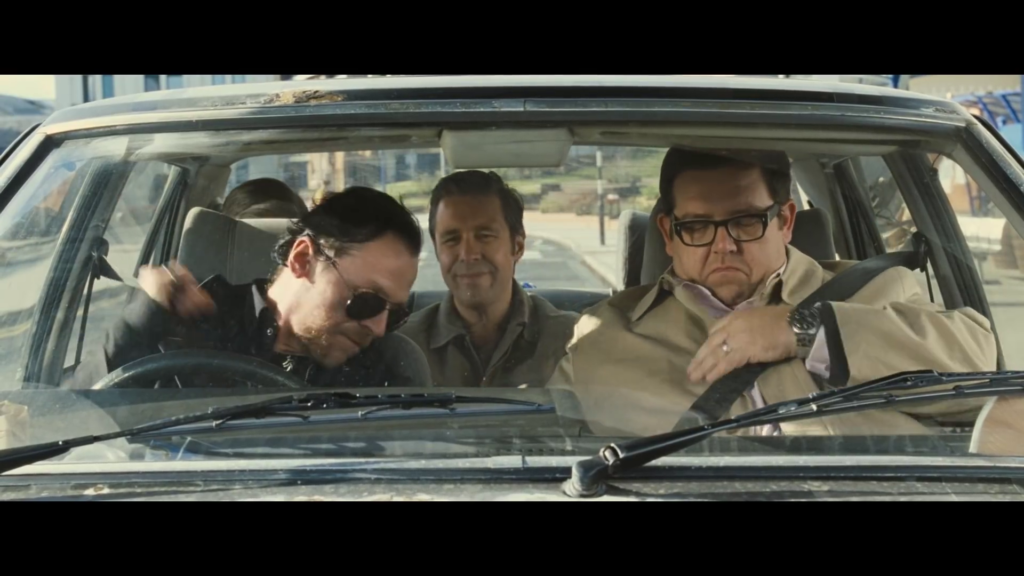
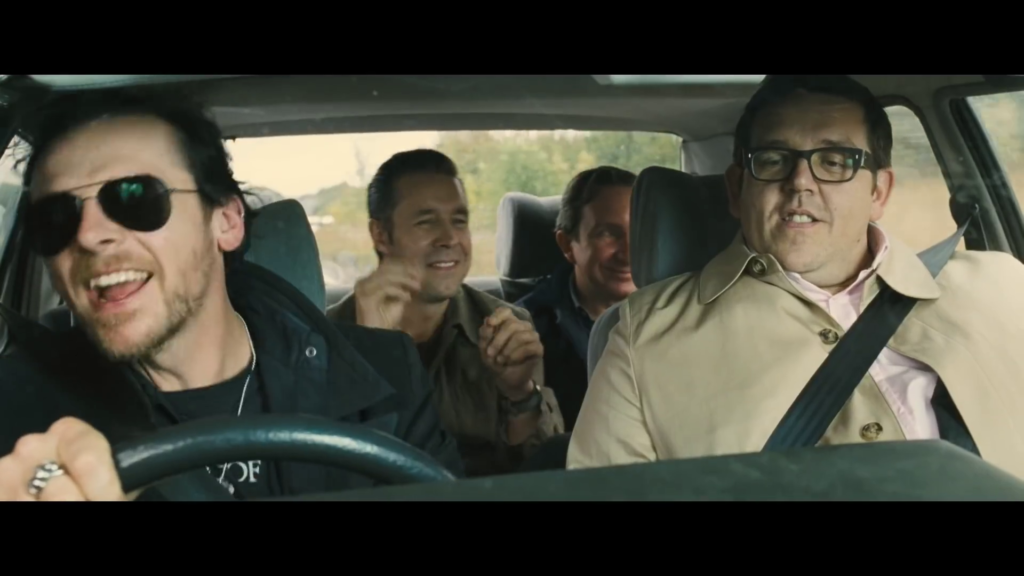
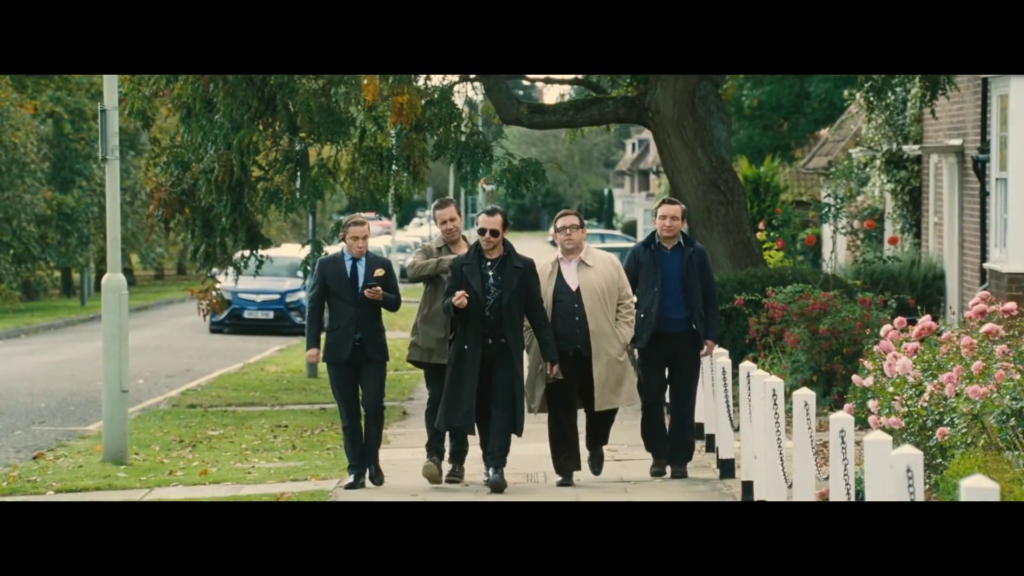
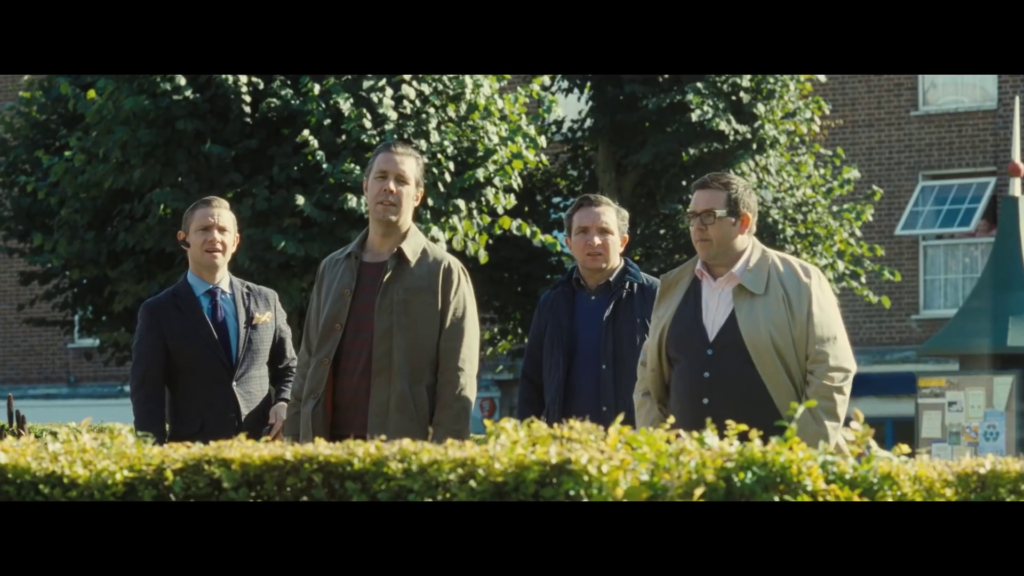
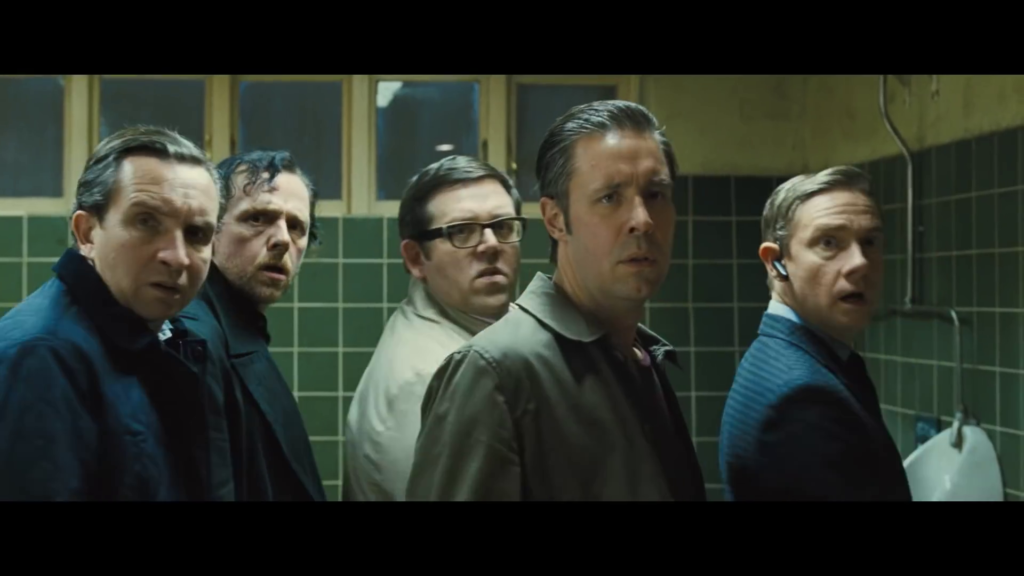
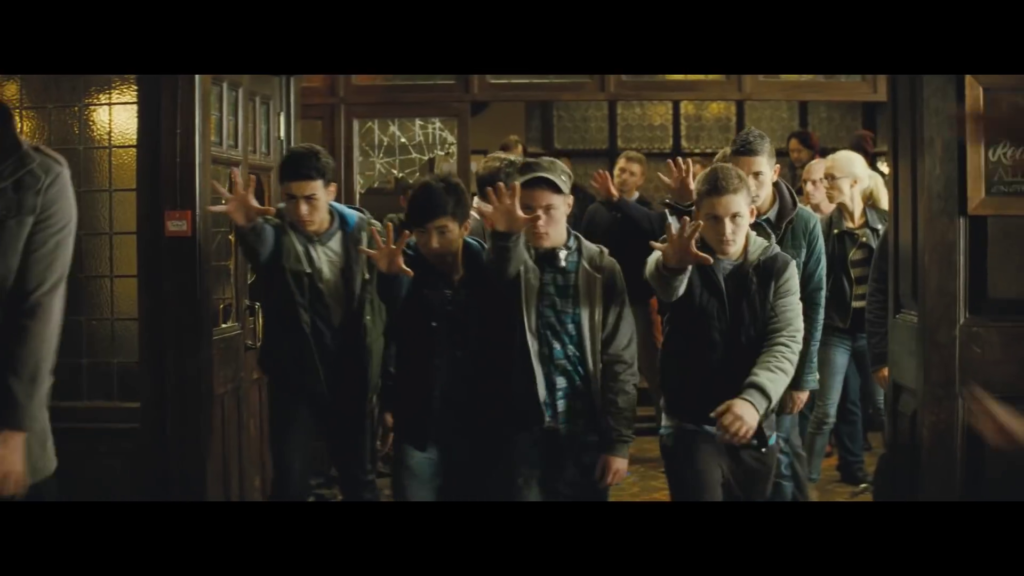
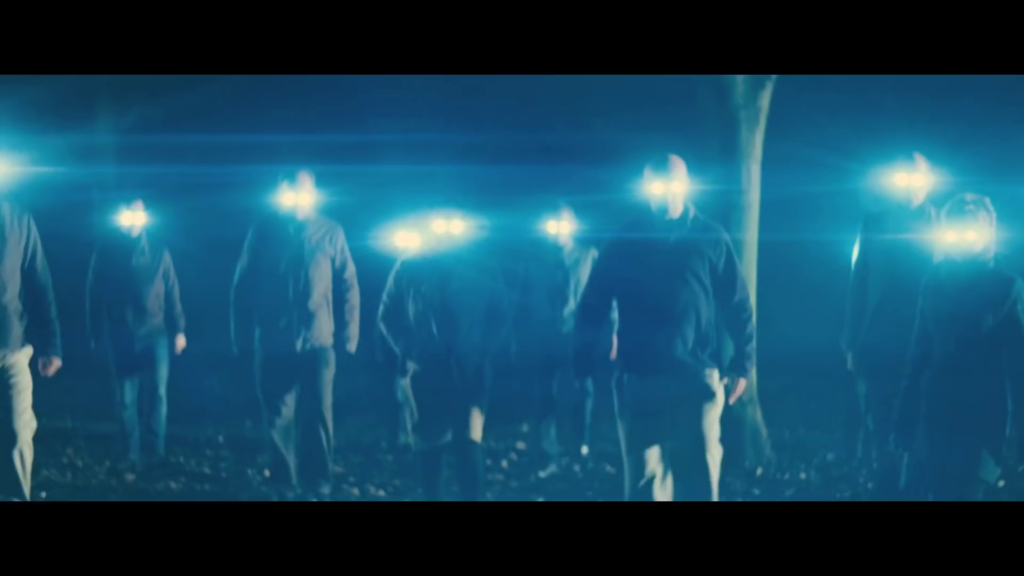
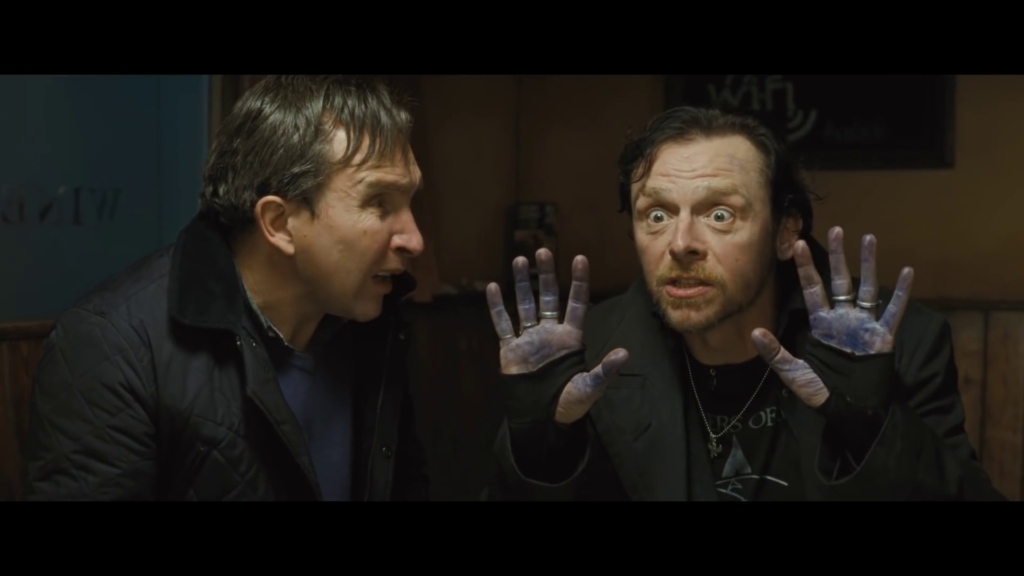
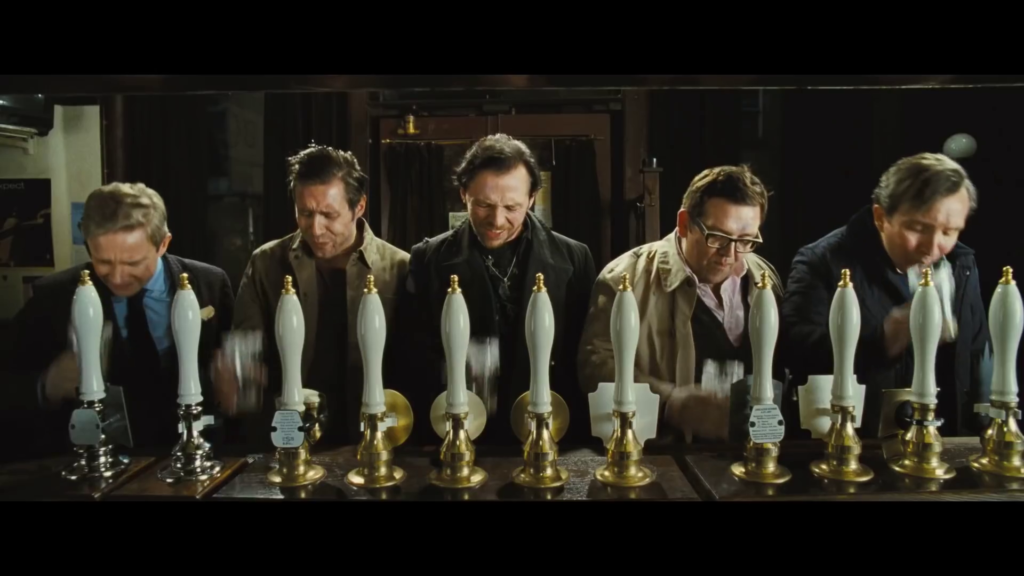
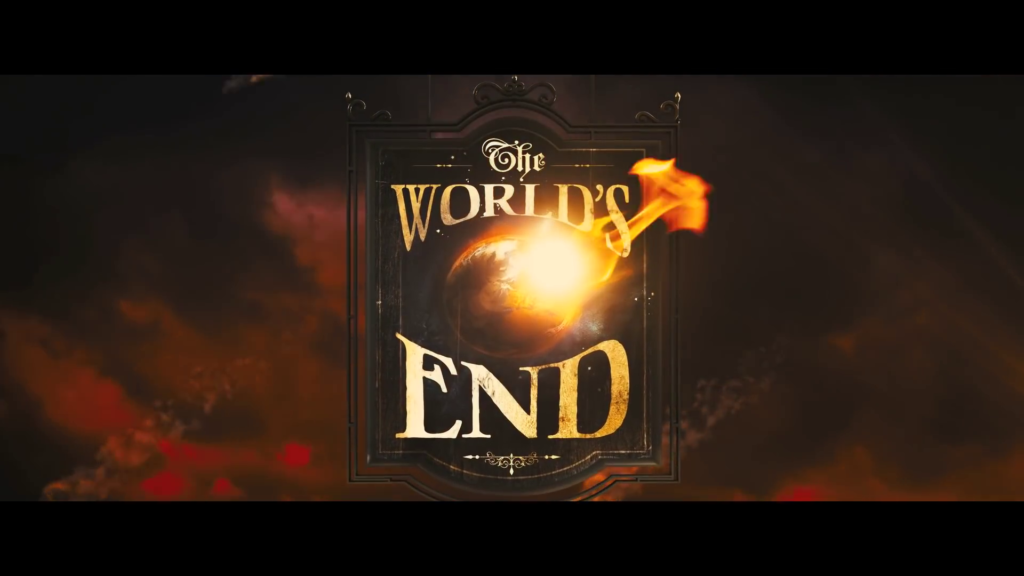
The World’s End (2013)
Film review #565
Director: Edgar Wright
SYNOPSIS: Gary King is haunted by a twenty year old memory of failing to complete the Golden Mile with his friends: twelve pubs, twelve pints that stretch across his hometown of Newton Haven. He decides to reunite the five friends and convinces them to travel back to their hometown to complete the task they began twenty years ago. However, as they undertake their legendary pub crawl, they begin to notice that there is something strangely different about their home town…
THOUGHTS/ANALYSIS: The World’s End is a 2013 filmed directed by Edgar Wright, and the third film directed by him and starring Simon Pegg and Nick Frost, with Shaun of the Dead and Hot Fizz being the previous two. in the opening, we see Gary King, a good-for-nothing tearaway, who decides to conclude some unfinished business from twenty years prior: a legendary pub crawl across his home town, with twelve pints across twelve pubs, concluding at the World’s End pub. Gary convinces his four friends, who now all have grown up with families and careers (apart from Gary, who is basically the same as he was in high school), and they return to their home town to try and finally complete their unfinished business. however, they find their home town has changed a little…in more ways than one, as they eventually discover that the town’s population has been taken over by robot clones by an alien intelligence who wishes to “improve” humanity’s behaviour to prepare it for acceptance in the wider galactic community. The film handles the split between the more down-to-earth premise of the beginning of the film, and the sudden turn to sci-fi strongly and smartly. But this shouldn’t be much of a surprise, given that Shaun of the Dead and Hot Fuzz also did the same thing with similar success. The World’s End feels like a continuation of what those film’s achieved in terms of storytelling and humour, delivering fast-paced dialogue, fight scenes and banter from it’s likable leads. poking fun at the trope of alien possession such as Invasion of the Body Snatchers, it provides a good setting for the characters to approach it in the guise of a pub crawl.
Simon Pegg plays the lead character of Gary King, an immature, good-for-nothing tearaway who hasn’t changed since his schooldays, and who presents us with a character we’re not sure whether to like or dislike: he exists as both someone who is problematic and an embodiment of some of the worst qualities of humanity, but also a reminder of who we once were as teenagers that quietly gets lost as the “real world” dawns upon us, highlighted by Gary’s four friends all having careers and/or families. They all provide a counterpoint to Gary’s antics, but Gary never feels outnumbered, as he’s always such a huge presence and takes control of conversations to turn them into high energy performances. Ultimately, Gary’s character arc doesn’t really get resolved in any final way, but that’s kind of the point: that people like him don’t fit into the grand plan, and that’s okay. The ending of the film isn’t able to match the rest of it, with the dialogue between Gary and the alien entity not having the same energy and witty wordplay as the rest, and the epilogue being the onset of the apocalypse may not be to everyone’s taste, but does little to sour the movie as a whole.
The film often feels like a refinement of the practices undertaken in Shaun of the Dead and Hot Fuzz, with Pegg and Frost doing their own stunts, high-octane action sequences, and quick, snappy wordplay which never misses a beat. The weak spots in the film are it falling short of following through on it’s theme of maturity, growth etc. in the end, and while it’s obviously going to be compared to the two aforementioned films, The World’s End doesn’t have those memorable moments that will distinguish itself and make you think of it on it’s own merit. The film definitely has plenty of polish and refinement, and the comedy, acting and general sense of fun are all top notch though, and make the film worth a watch regardless of any negatives that don’t sour the whole experience.
-
#493 – Back to the Siam (2013)
Back to the Siam (2013)
Film review #493
Director: Gonzalo Rodan
SYNOPSIS: Marty visits his friend Doc Brown and finds that he has invented a time machine…made from a fridge. A bunch of men in suits appear and try to catch Marty and the Doc, leading to Marty accidentally being transported back in time to the year 1986. There, he has to find Doc Brown again to help him fix the time machine to get back home…
THOUGHTS/ANALYSIS: Back to the Siam is a 2013 science-fiction film, based on…well, you can probably guess. The film centres around Marty Fox, who visits his pal Doc Brown to find he has completed work on a time machine that he has constructed himself out of a fridge. However, some men in suits come to put a stop to the Doc’s experiments, and Marty is accidentally sent back in time to 1986, damaging the time machine in the process. Marty goes to the Doc Brown in 1986 to get help in fixing the time machine and sending him home. The film is essentially made as an Argentinian Back to the Future, so while the essential plot is more or less the same, a lot of the settings, people, and scenarios are replaced by things which are more common to Argentina. For example, instead of the lightning storm which takes Marty back to the future in BttF, here it is the electricity generated when footballer Maradona scores a goal at the 1986 world cup. This is obviously a low-budget, somewhat satire of the films, so you can’t penalise it for accuracy, but the changes it has made to the film mostly fit the story well, and give the story a bit of a twist. Obviously it is based on the foundations of an already well written film in BttF, so I don’t want to give Back to the Siam too much credit for that. I could not find any English subtitles for this film, but I don’t think it really matters if you know Back to the Future like nearly everyone does, but does mean I can’t really comment on the jokes or humour. The physical humour is mostly entertaining though.
The biggest change from Back to the Future is that the “past” in this film is 1986, which is about the same time that the “present” was in BttF (1985, to be exact). This could have been a pretty interesting thing for the film to play with, but as mentioned, it’s aim is to make an Argentinian take on the original, rather than try anything too new. The main characters too are basically the same, just tweaked to reflect their locale. The character of Biff Tannen doesn’t have a counterpart in this film though, and instead the antagonists are just men in suits. The main focus of the story is the first Back to the Future film, but there’s some nods to the second and third film, so it definitely feels like a take on the franchise as a whole, which is nice, and means that the film won’t set up a sequel it will never get.
This should not come as a surprise, but this film is completely unlicensed, and has no permission to use any of the names, characters, or anything. It reminds me of the films of the 60s and 70s that would simply make films based on entire franchises without permission, typically in countries where they would not be found out and sued into oblivion. Back to the Siam doesn’t use any Back to the Future footage, but it does use a lot of the music, which it definitely doesn’t have the licence for: if you were going to argue this was simply a fan-made parody, then that might be the thing that tips it over the edge into plagiarism territory. Despite being a low budget “parody,” there’s obviously a lot of thought and effort gone into certain aspects of the film: the fridge being the time machine instead of the DeLorean (obviously there would have been no way to afford one) genuinely works and looks cool, as well as providing some fun gags. The camera work is also surprisingly good, and shows competency when switching between different angles in scenes. The biggest production issue is the audio: it constantly peaks and distorts, and voices in the same scene can often have completely different volume levels. Even doing something basic like having a limiter would have helped immensely; it’s quite odd that there’s such a disparity between the camera and audio work.
Overall, Back to the Siam is what you would expect from a low-budget parody/re-make/bootleg…whatever you want to describe it as. It uses the successful formula and story of what it is based on, and adds it’s own flair. While keeping fairly close to that original, it also sometimes decides to just go ahead and do what it wants. At one point it decides to just through in a version of “A whole new world” from Disney’s Aladdin for no reason. I appreciate the randomness though, and also the effort taken to give the source material a different flair. It’s not going to offer you anything that Back to the Future doesn’t, and a lot of the Argentinian cultural references may not offer anything if you’re not familiar with them, but it definitely could have been a lot worse.
-
#492 – 5.5.5. (2013)
5.5.5. (2013)
Film review #492
Director: Gustavo Giannini
SYNOPSIS: Gabriel is a philosophy teacher at a night school. A woman named Amnis enrols in his class, who vanishes without a trace after their intimate encounter. Her interest in the artist Benjamin Solari Parravicini, and his art that apparently predicted the future, leads Gabriel to research the artist’s works and unravel just what Parravicini saw in humanity’s future…
THOUGHTS/ANALYSIS: 5.5.5. (also known as Prophecy) is a 2013 film from Argentina. In the opening we are introduced to Gabriel, a philosophy teacher who is running a night course at a local school. A new student named Amnis introduces herself, and talks to Gabriel about the art work of Benjamin Solari Parravicini, whose art is printed on her shirt, and apparently predicted the future in his works. After an intimate encounter with her, she vanishes without a trace. Gabriel starts trying to locate her and researching Parravicini’s work, and learns that Parravicini’s predictions have come true, such as predicting the 9/11 terrorist attacks amongst others. He, aided by his cousin Tony, seek to unravel Parravicini’s prophecies and the apparent coming of an apocalyptic event which will strike the Earth in the near-future. The story of the film revolves around piecing together Parravicini’s visions and Gabriel’s developing obsession with them. The premise is pretty interesting, and the mystery surrounding Amnis’ identity and whereabouts is something which will keep viewers intrigued about until the end. There’s a couple of other smaller threads concerning Gabriel’s ex-wife and child, Tony’s schemes and some shady people trying to stop Gabriel unravelling Parravicini’s secrets, but they only really serve to build up different sides of Gabriel’s character. The trouble with the story is it never really gets too interesting: it’s basically Gabriel just doing research. The build-up to an apocalyptic event in the near-future that Parravicini prophesised and Gabriel trying to work out when is a bit more interesting. But ultimately goes nowhere. The film obviously hinges on leaving certain questions open regarding the prophecies and whatnot, but there’s not enough concrete results or a pay-off that is needed to provide a foundation to consider the ambiguity, and it ultimately feels like it leads nowhere. Some of the more interesting aspects like the neighbourhood that apparently distorts sense of time, are one such example that is left open, but is something that would make the story more interesting if it was revealed how it figured into the story.
Perhaps one of the weakest links in the film is the character of Gabriel himself: he just isn’t an interesting lead. It is difficult to empathise with him because he rarely shows his reactions to what is happening. Whether this is down to the acting, or he is intentionally written like that I don’t know. The parts of his character like being a philosophy professor, or being a parent, only figure into the film when absolutely necessary, and otherwise don’t affect his actions. Amnis is an interesting character, and the mystery surrounding her is a good thread that flows through the film, but the reveal only raises more questions: if she was from the future, how did she time travel? Was she a prophecy that Gabriel could see? Just explaining the mechanics of things a little would not ruin the ambiguity I think. The rest of the characters, as mentioned, don’t really come into their own, and only serve to bounce off of Gabriel’s character. Tony as the vaguely “comic relief” character fulfils a very obvious role that doesn’t really fit the serious tone of the film.
The film eventually reaches a point where it turns out that a shadowy organisation has been hoarding Parravicini’s artwork and preventing his prophecies from being found out. A man starts following Gabriel and the stakes get raised, but in the end it just goes nowhere. The ending of the film is also like that, as Gabriel just admits he has lost it and needs help, just before he is seemingly killed by the mysterious man. I am left wondering what the point of it all was: there’s no real conclusion to anything, and the prophetic vision or whatever it is that ends the film comes out of nowhere, and seems like a bland attempt at trying to create an ambiguous ending in a film that is already full of holes. 5.5.5. has some good moments in it’s intriguing and somewhat interesting story, but falters with it’s cast and characters. It’s attempt to create meaning often leaves the story full of gaps, and the unconvincing responses from characters will leave viewers without direction with regards to what to feel. Not a film entirely without merit and perfectly watchable, but you might not get anything out of the experience.
-
#480 – Hard to be a God (2013)
Hard to be a God (2013)
Film review #480
Director: Aleksei German
SYNOPSIS: On another planet, the civilisation there is undergoing a period of time similar to the Earth’s Middle Ages. However, this civilisation has not undergone a Renaissance period, and those intellectuals, scholars and artists that would bring it about are mercilessly hunted down by the Order, who rule over the people. A group of Earth’s scientists are sent to the city of Arkanar on the planet to observe how this civilisation develops, with orders to not interfere with the society and to keep their mission secret.
THOUGHTS/ANALYSIS: Hard to be a God is a 2013 Russian sci-fi epic, based on the 1964 novel of the same name. The film centres around the city of Arkanar on an alien planet, where a Middle Ages civilisation is diverging from Earth’s history, and any attempts at a Renaissance-era is being snuffed out by the ruling Order, which is arresting scholars, intellectuals and artists that may bring this new era about. A group of scientists from Earth are sent to observe this society with orders not to interfere or kill anyone (very Star Trek prime directive, although the original novel came out a year or two before the original TV series). One scientist has taken the guise of Don Rumata, who claims to be the son of a local God, and smuggles the intellectuals that the Order are hunting safely out of the city. The story of the film is…a bit difficult to follow, but at the same time, there isn’t too much to follow. There’s the elements of the Earth scientists, which doesn’t really influence the plot; partly by design, as they are not allowed to interfere. Also the setting of the medieval town itself does not lend itself to a cohesive narrative, with swathes of people just trying to survive amid the filth and fear they are living through, gives the film little direction. This again, however, is by design, as the film really hinges on being able to portray the mess of medieval society, unguided by the scholars and artists. The film definitely echoes the old Soviet Union epics, particularly Tarkovsky’s Andrei Rublev, also filmed in black and white. At nearly three hours, it is definitely an endurance piece, and without that direction that a definite story would typically give a film, the viewer becomes increasingly pulled into the mire of this society, which is obviously the film’s objective. It’s definitely not for everyone, but the film clearly has a very specific ambition and vision, and for the most part, it fulfils said vision with notice effort being poured into all aspects of it.
What makes this film stand out is how the setting is brought to life: this medieval city is absolutely covered in filth and dirt: the people wade through mud everywhere they go, their faces smeared with dirt and blood, and an absurd amount of corpses and entrails hang from the ceilings and adorn the sides of the pathways. Every shot feels like it is considered and thought through: the shot is often obscured with detritus, or extras moving across the camera, constantly giving the impression of everything being claustrophobic, and it being impossible to avoid the filth of the film. Most scenes are long single takes, which must have taken considerable effort to pull off, especially considering the aforementioned amount of extras and objects the camera moves through. The only critique I would say in this respect is that sometimes the camera moves awkwardly through the scenes, but again, given how much is going on, it’s a technical achievement that this only happens very rarely. The film isn’t particularly gory, but instead focuses on this dirt and unhygienic conditions that immerse the viewer as any everyday occurrence, rather than moments of shock and violence. There are a few particularly gory parts, such as when we see someone’s eye ripped out (from behind their head anyway), and an open chest with a still beating heart in it, but these are few and far between: the choice of the film being black and white also somewhat mutes the gore, but in these particular scenes, it becomes incredibly visceral, even without the colour.
As mentioned, the story is almost lost amidst the immersion of the visuals: there’s so much going on visually and viscerally that following what the characters are saying and doing is very much a secondary concern. There’s no traditional sci-fi metaphor or influence either, other than we are told these scientists came from Earth on an observation mission. I suppose elaborating on these elements would detract from the vision of the film becoming immersed in this society. Reviews on this film typically praise the vision and ambition of the film’s production, but is much more divisive with regards to how it tells its story, and also how it portrays the Middle Ages; which certainly wasn’t devoid of scholars, art and beauty, but also definitely wasn’t the easiest of time to live through. I would generally agree with the consensus: that Hard to be a God is a film that aims to immerse its viewers into a dark, filthy and harsh world, and succeeds in doing so. Whether that is enough to immerse all viewers with a minimal story that is difficult to follow sometimes is another matter, but I think it succeeds in doing what it set out to do. If you like your epic art films, you’ll get something out of it; if you don’t, you might not last the whole three hours.
